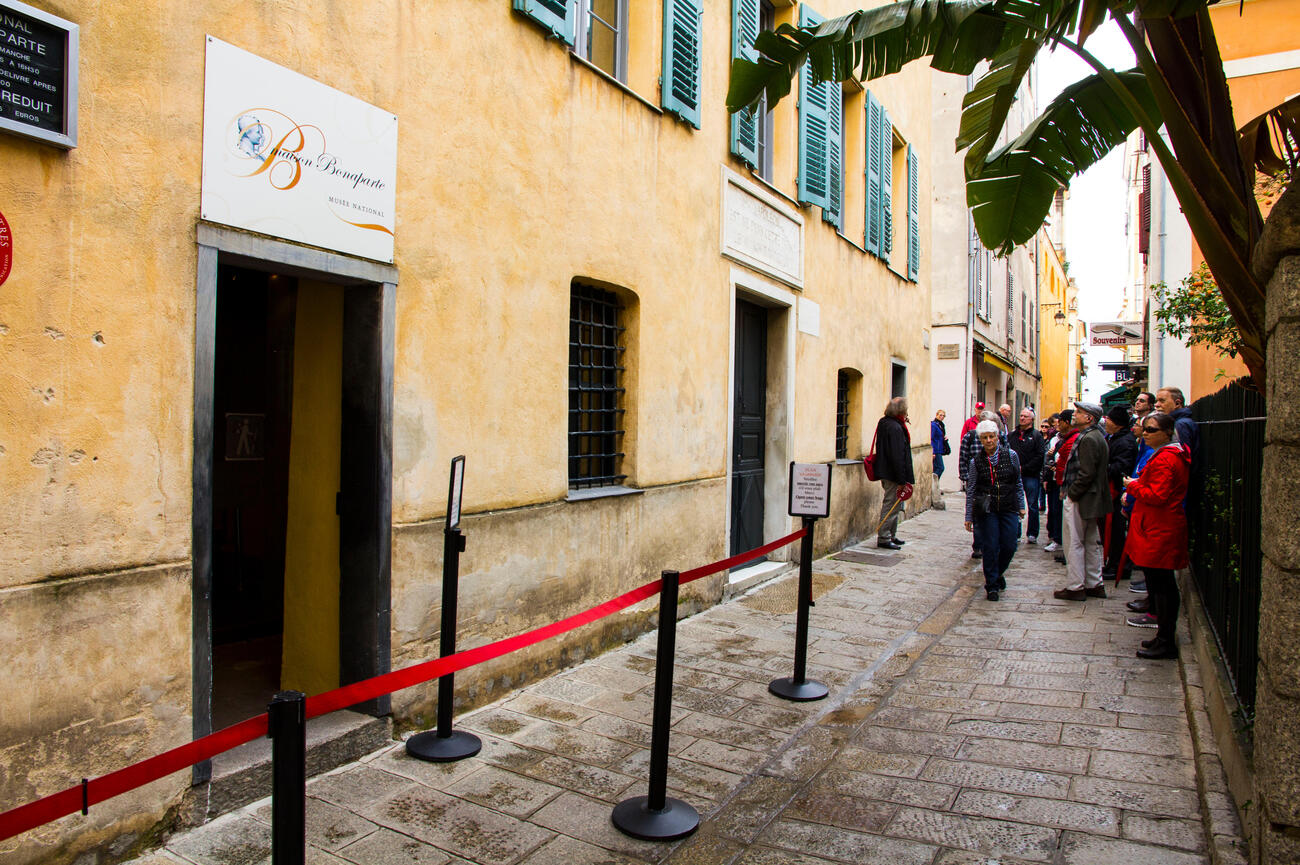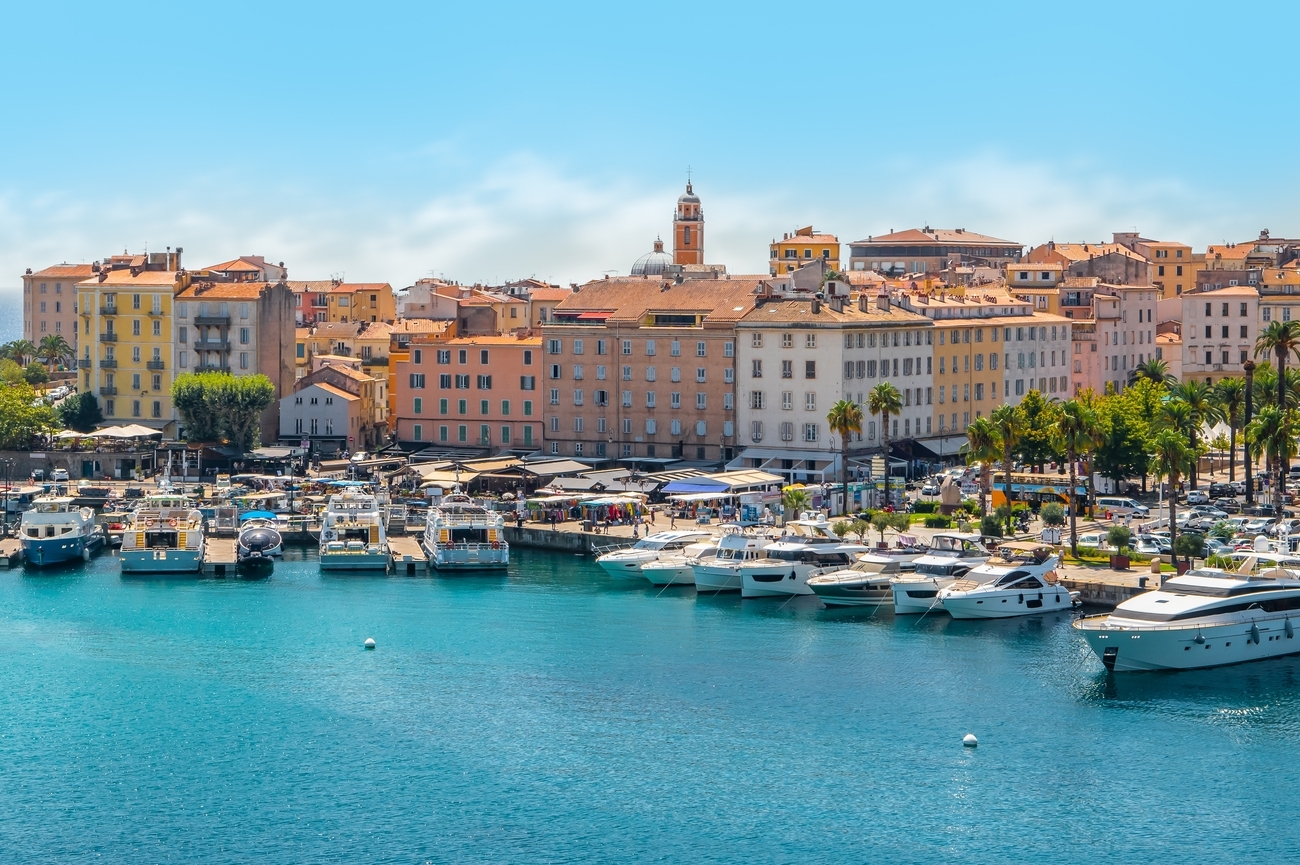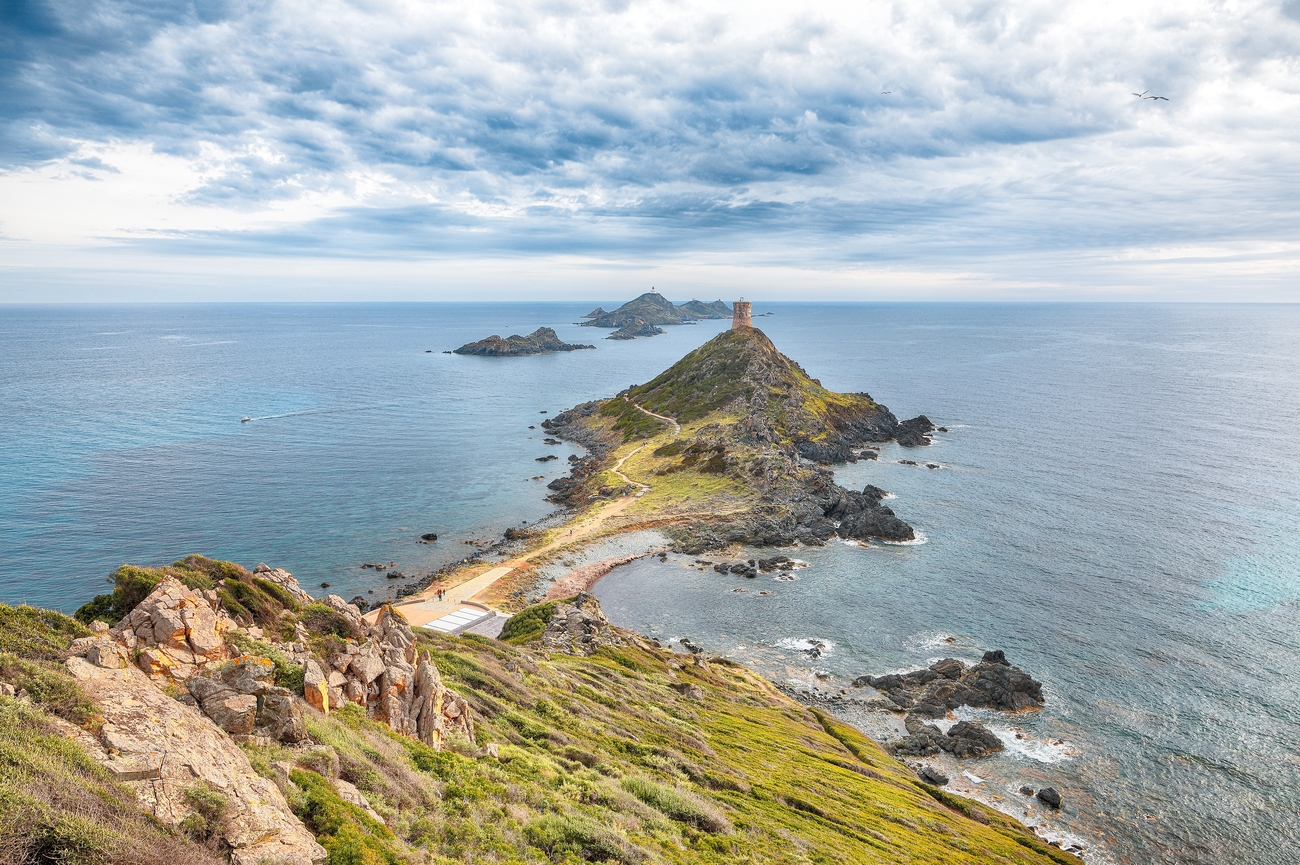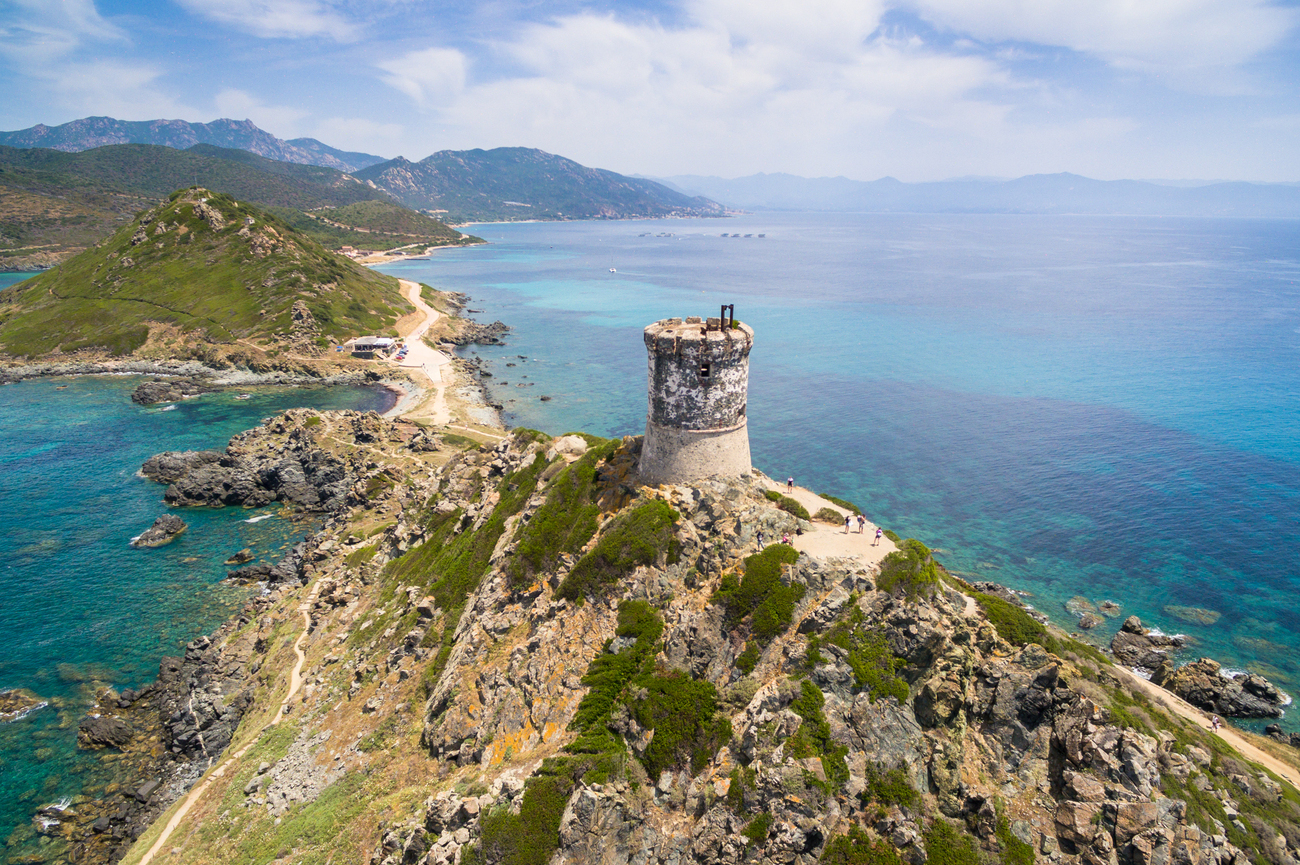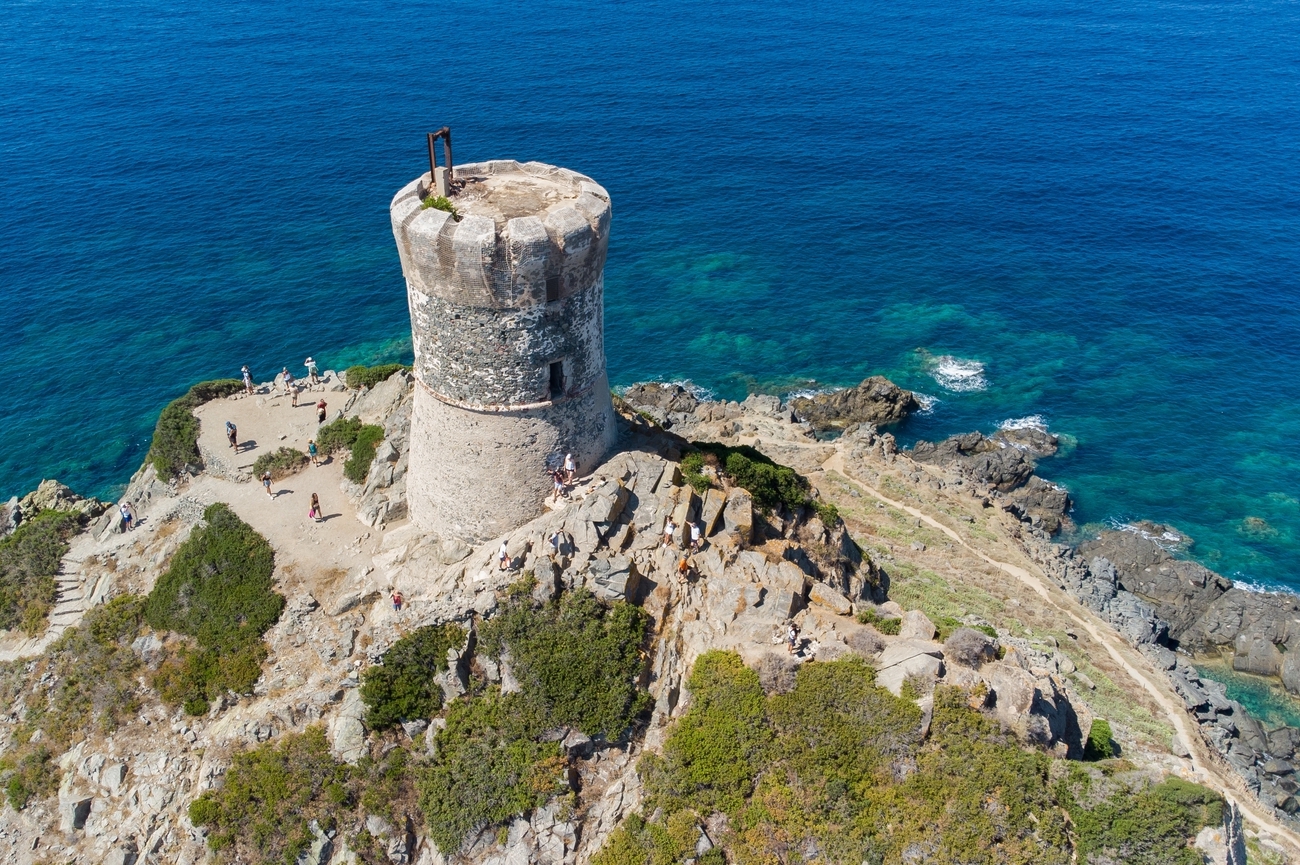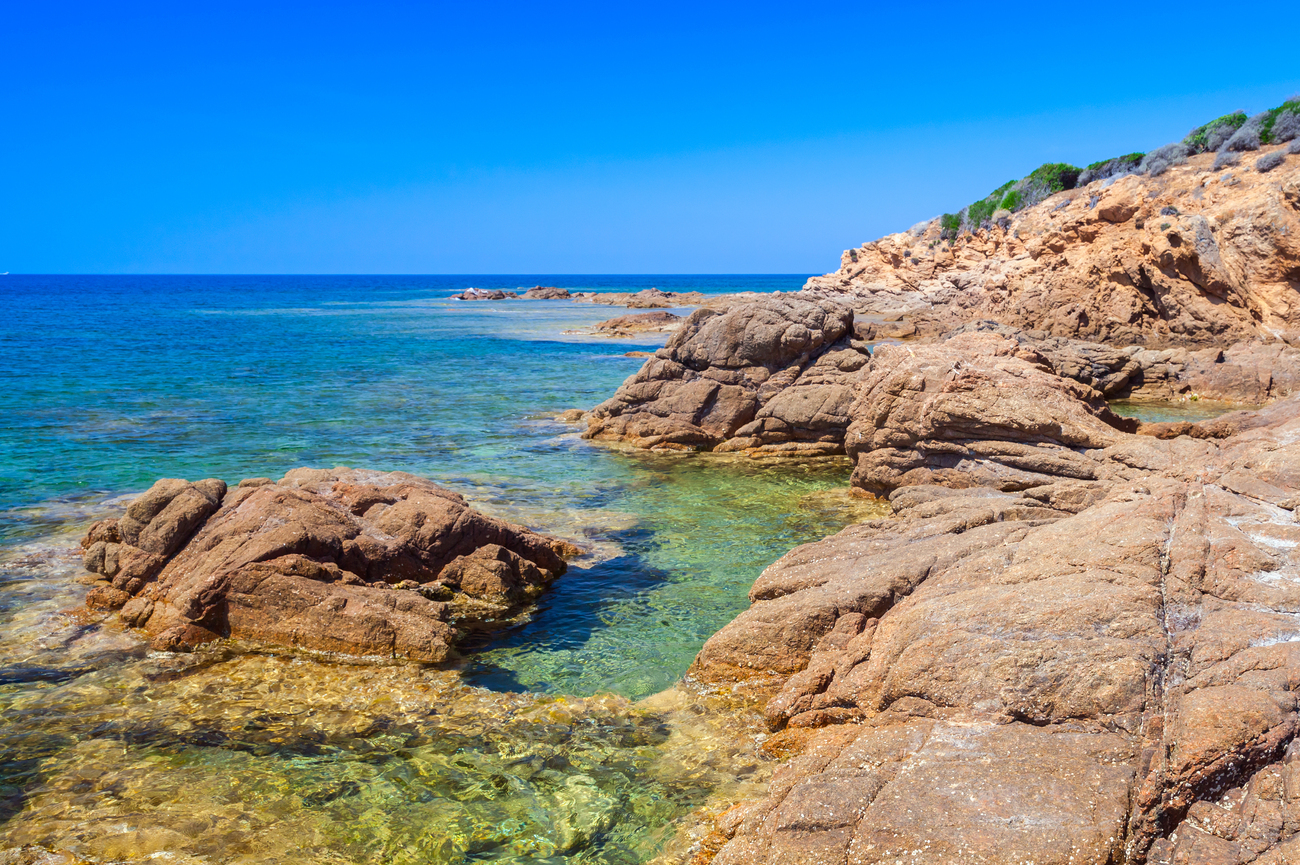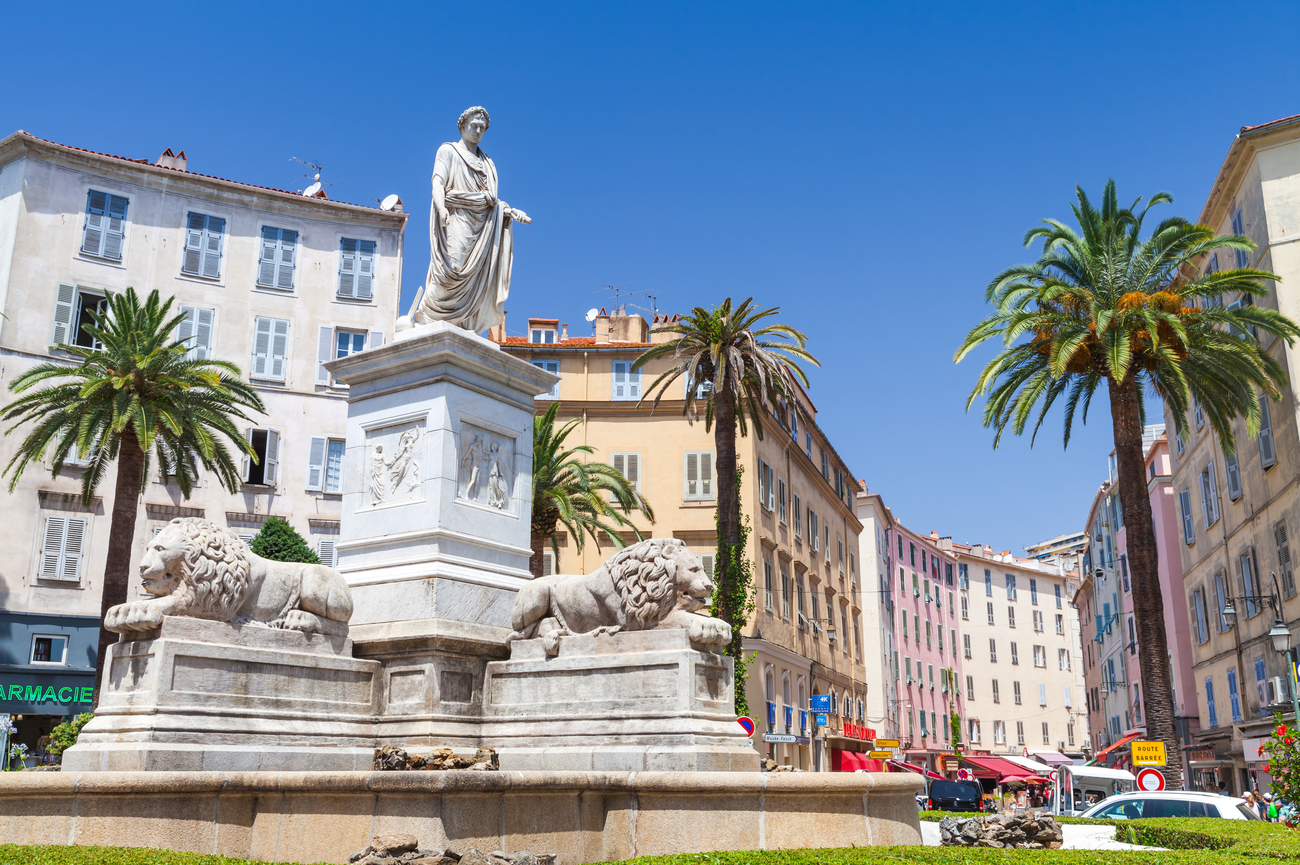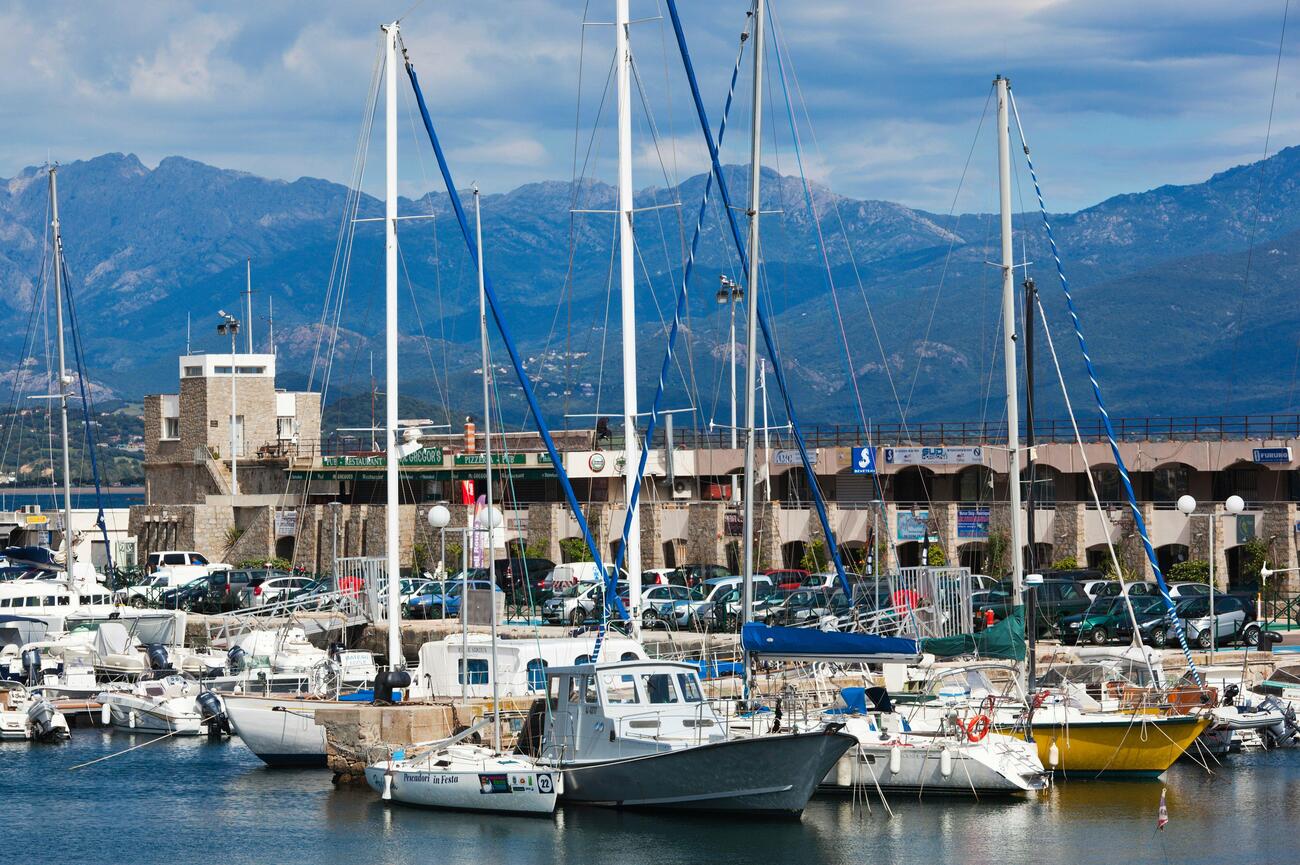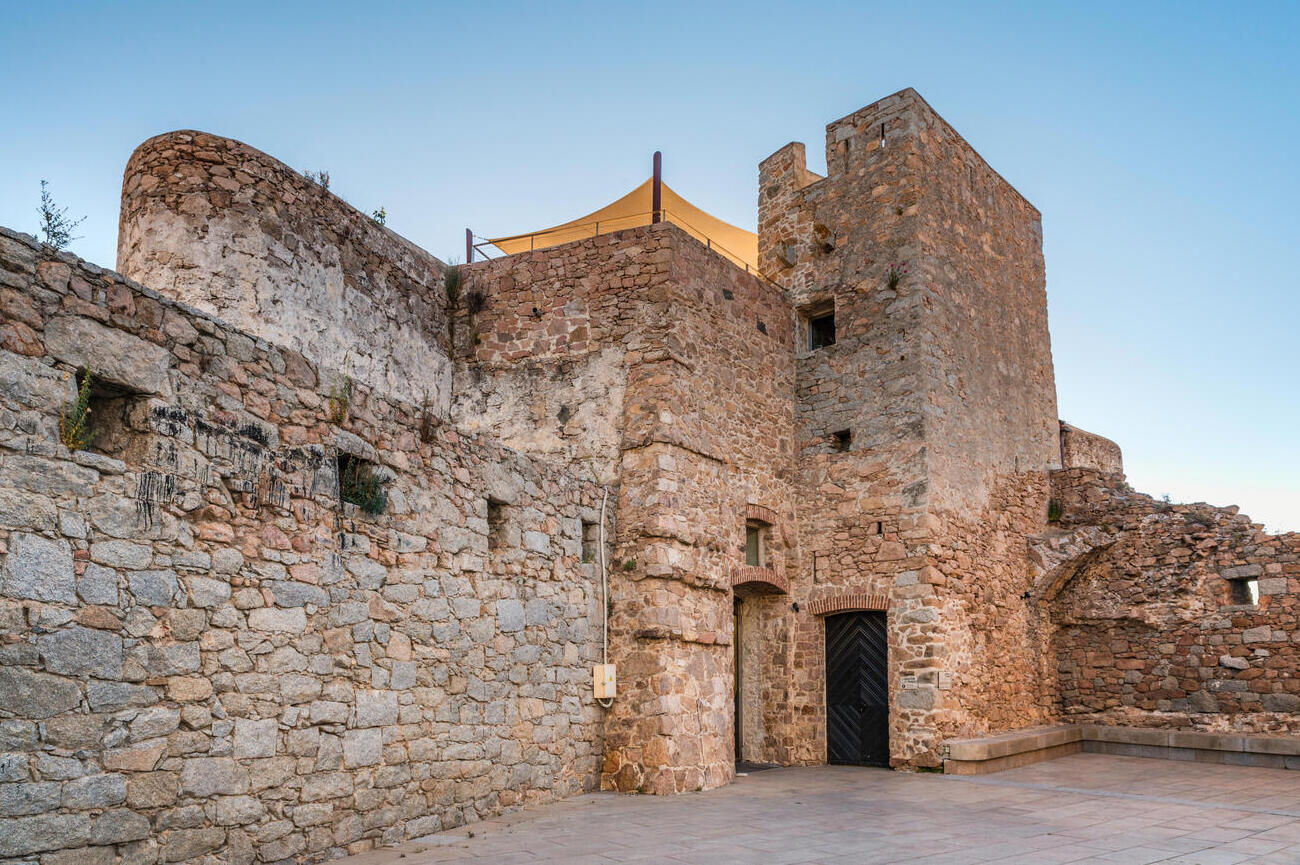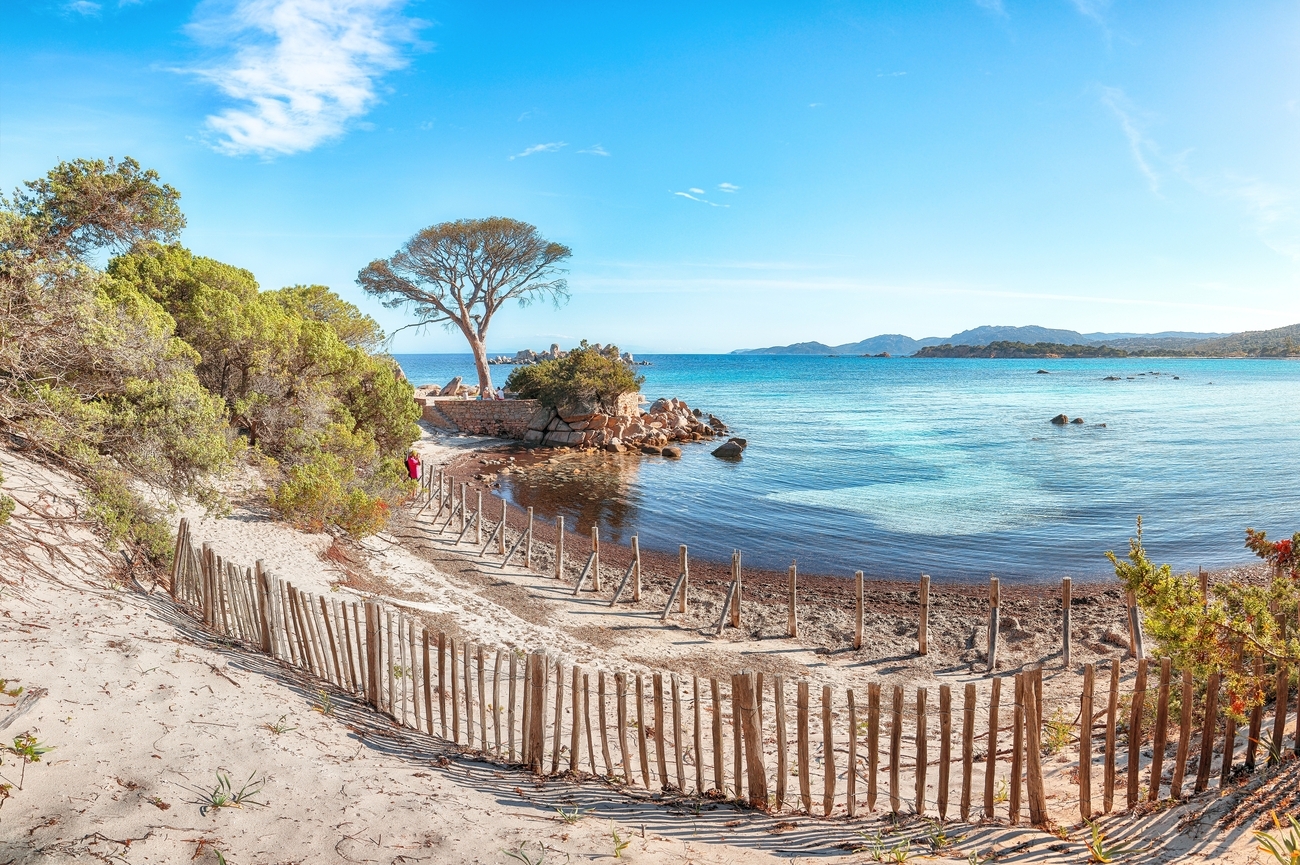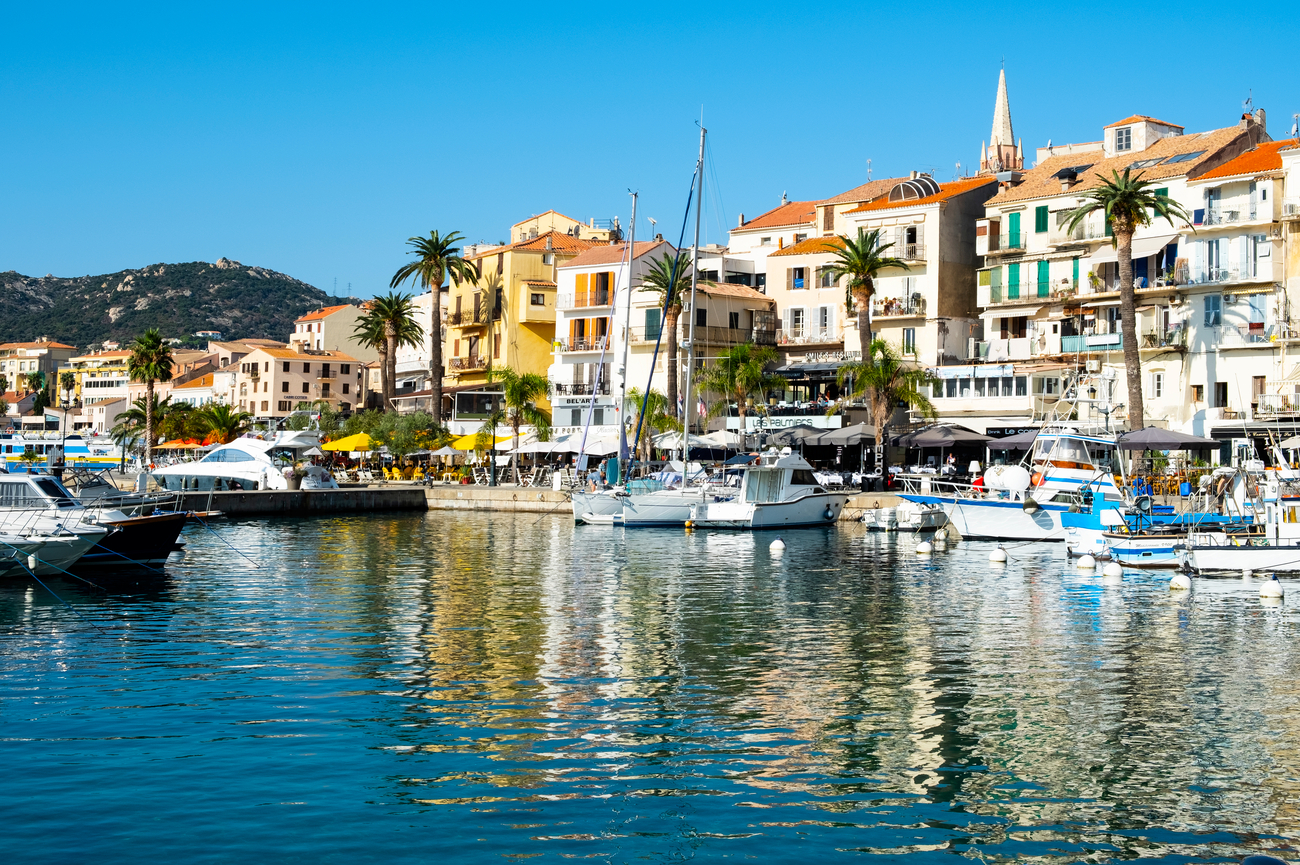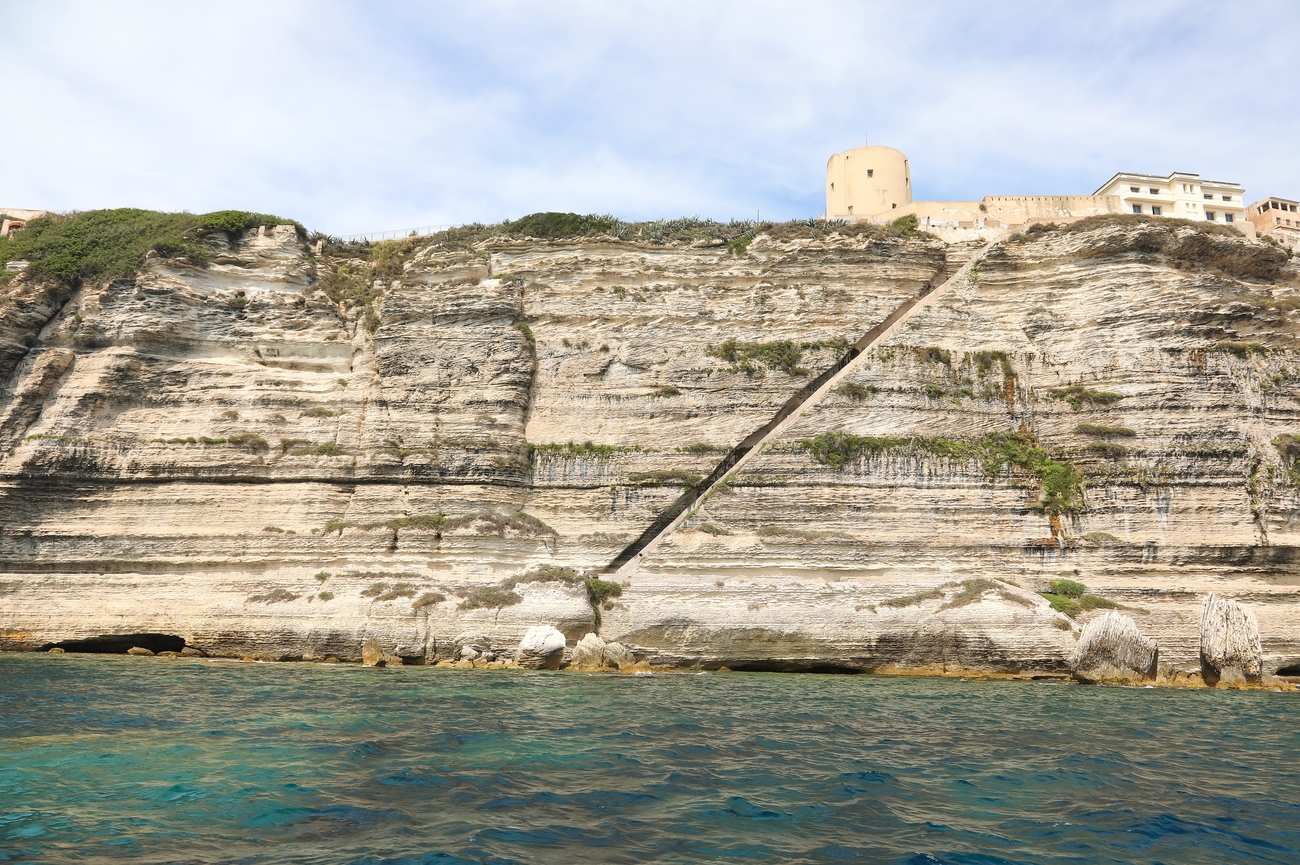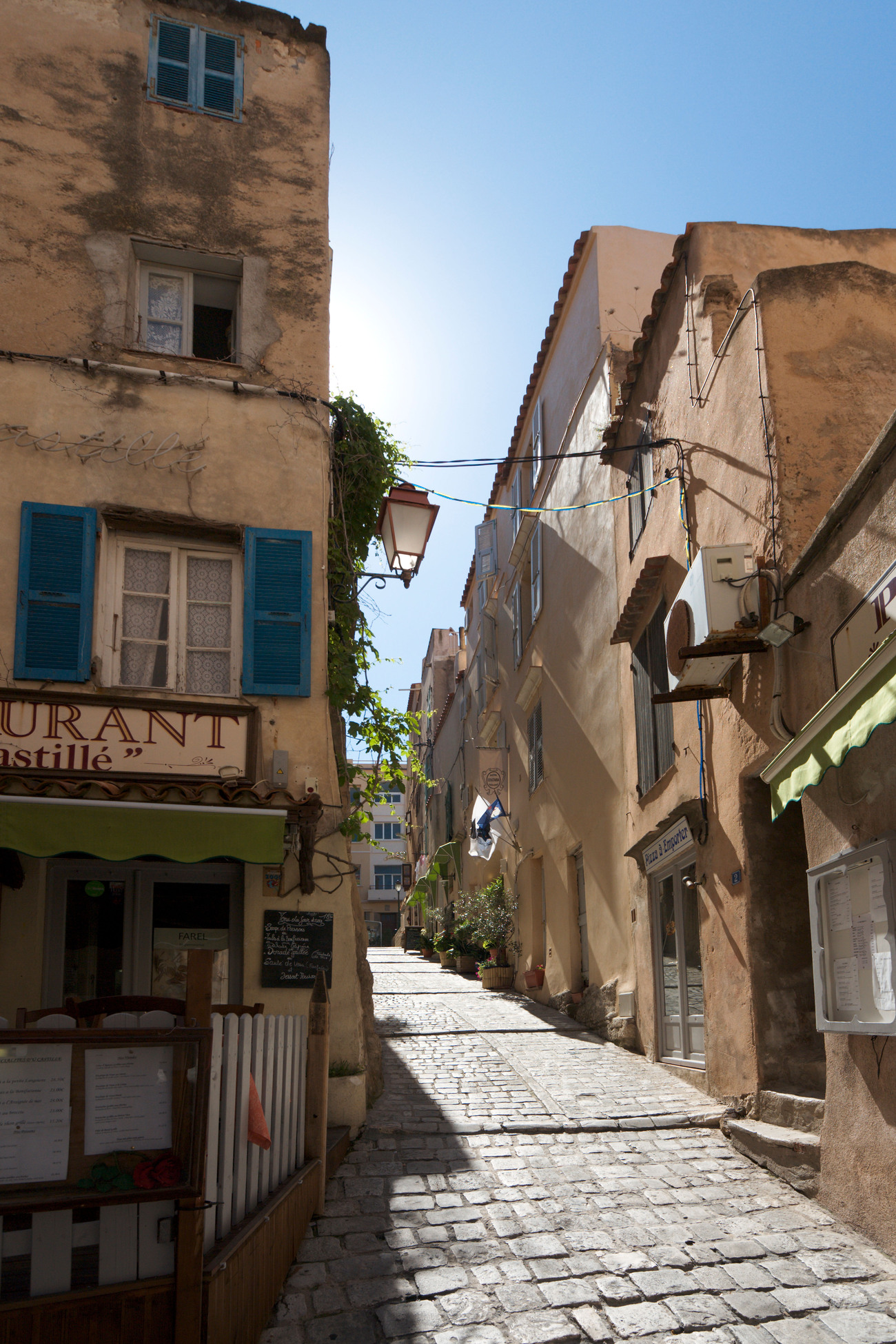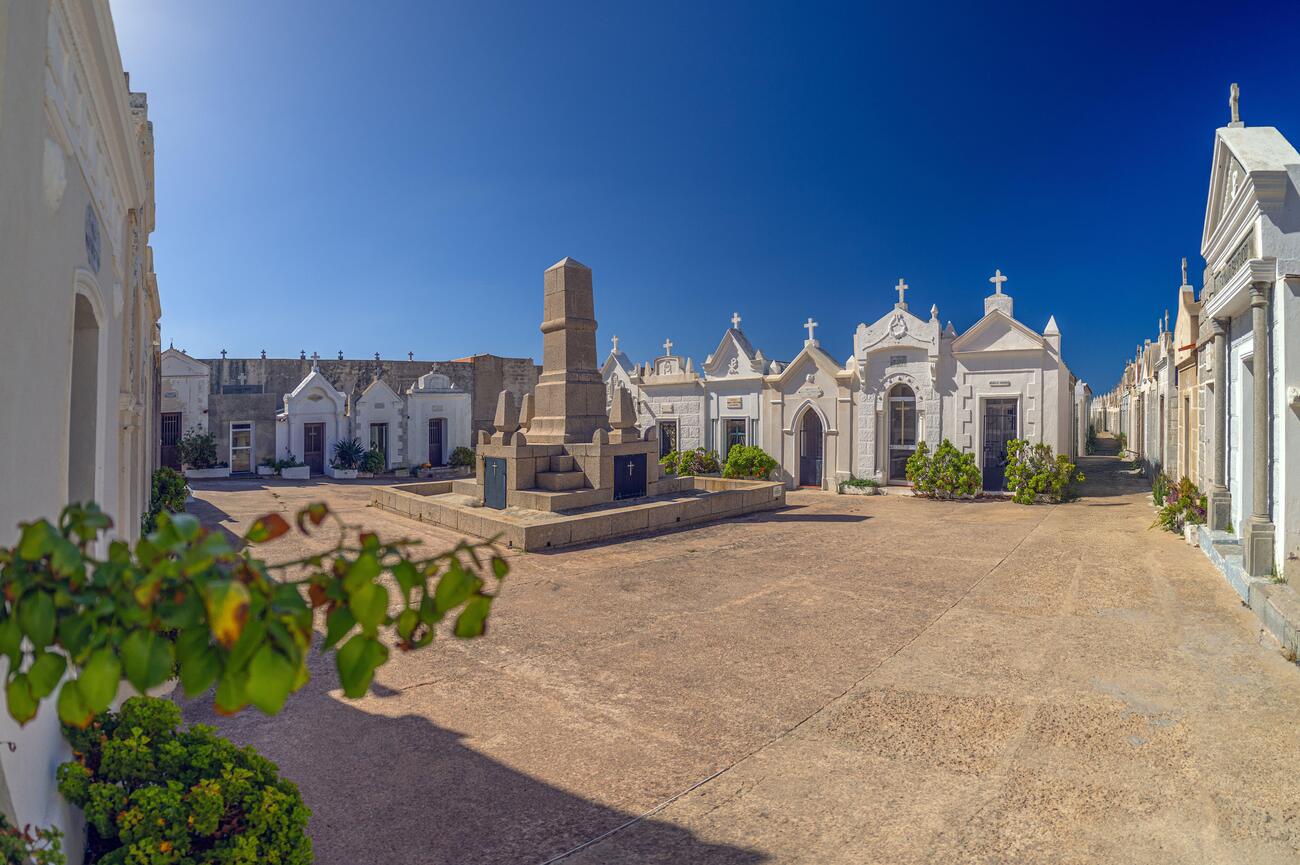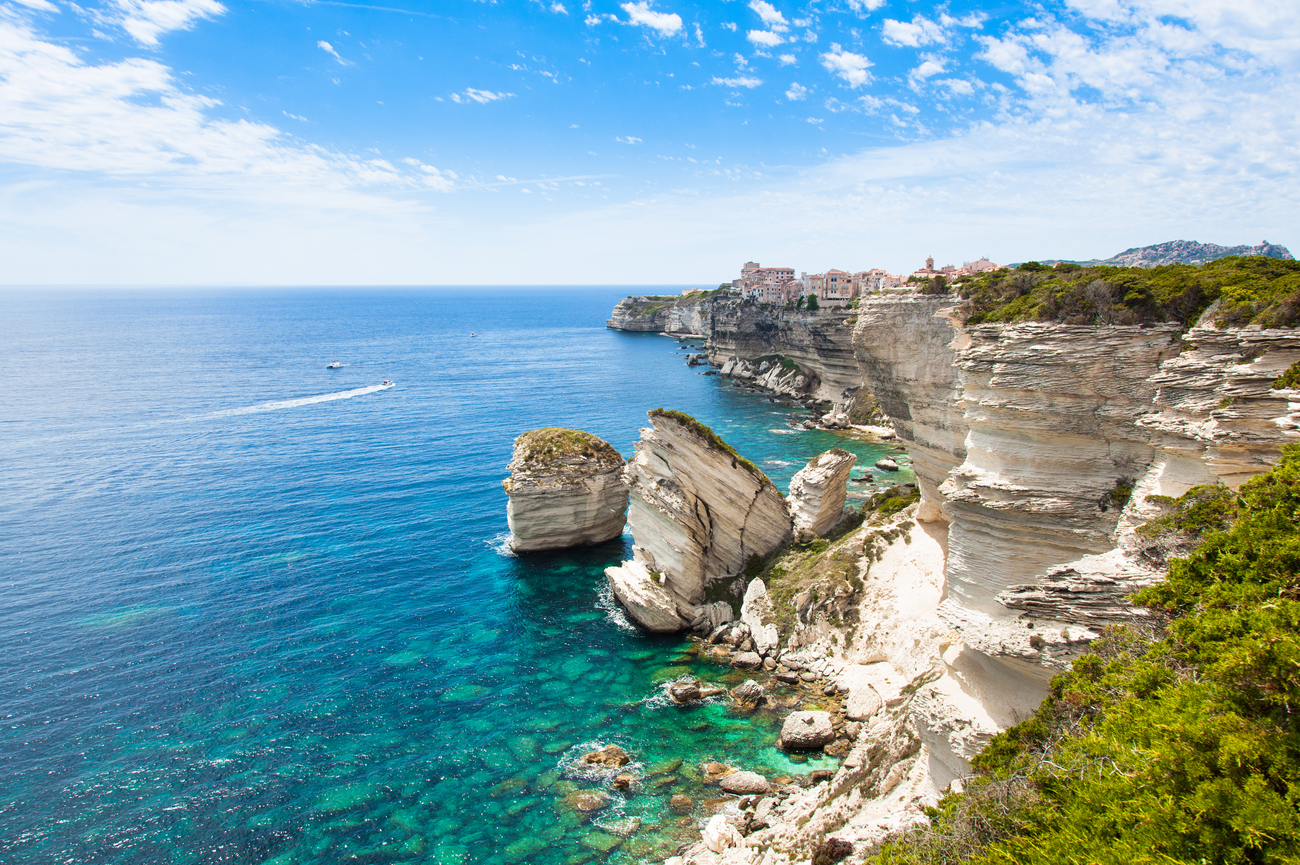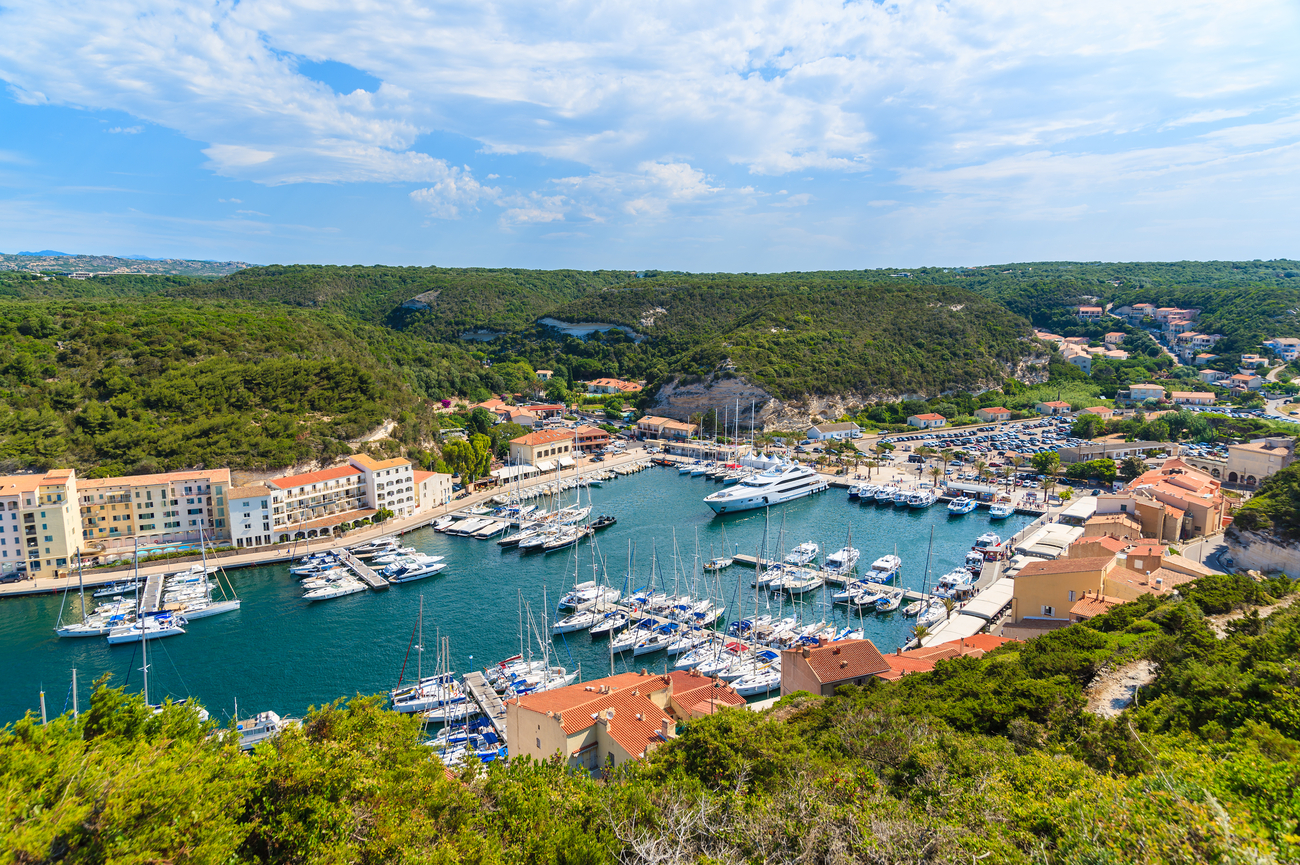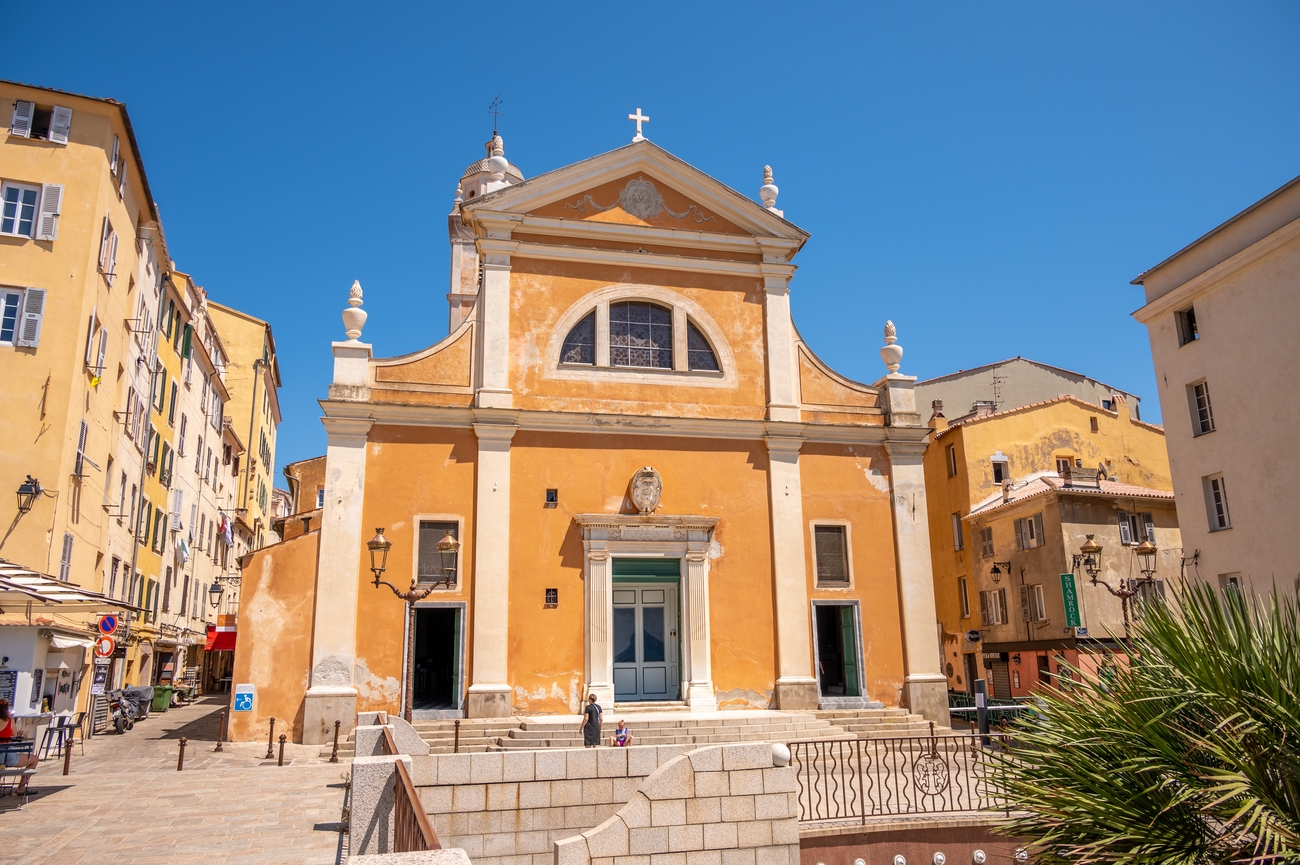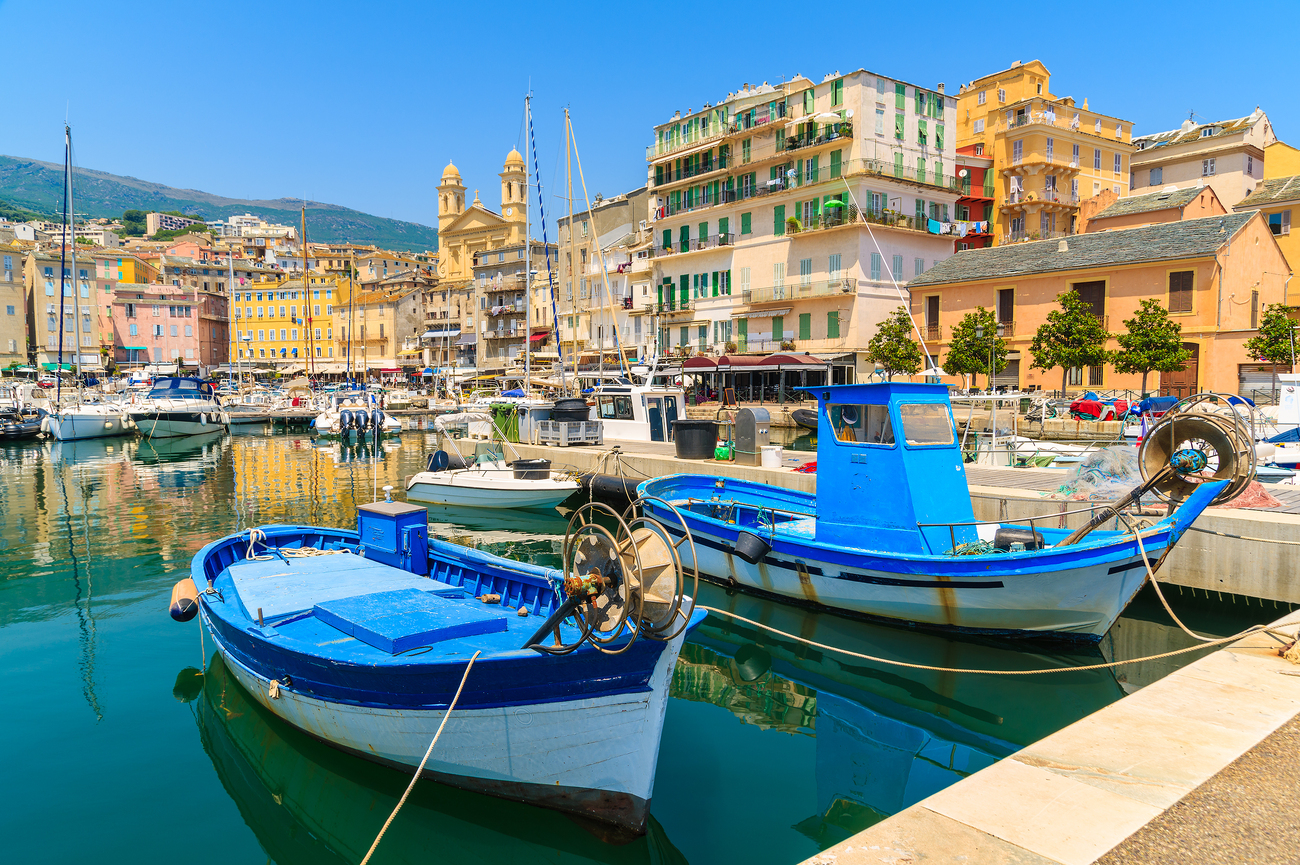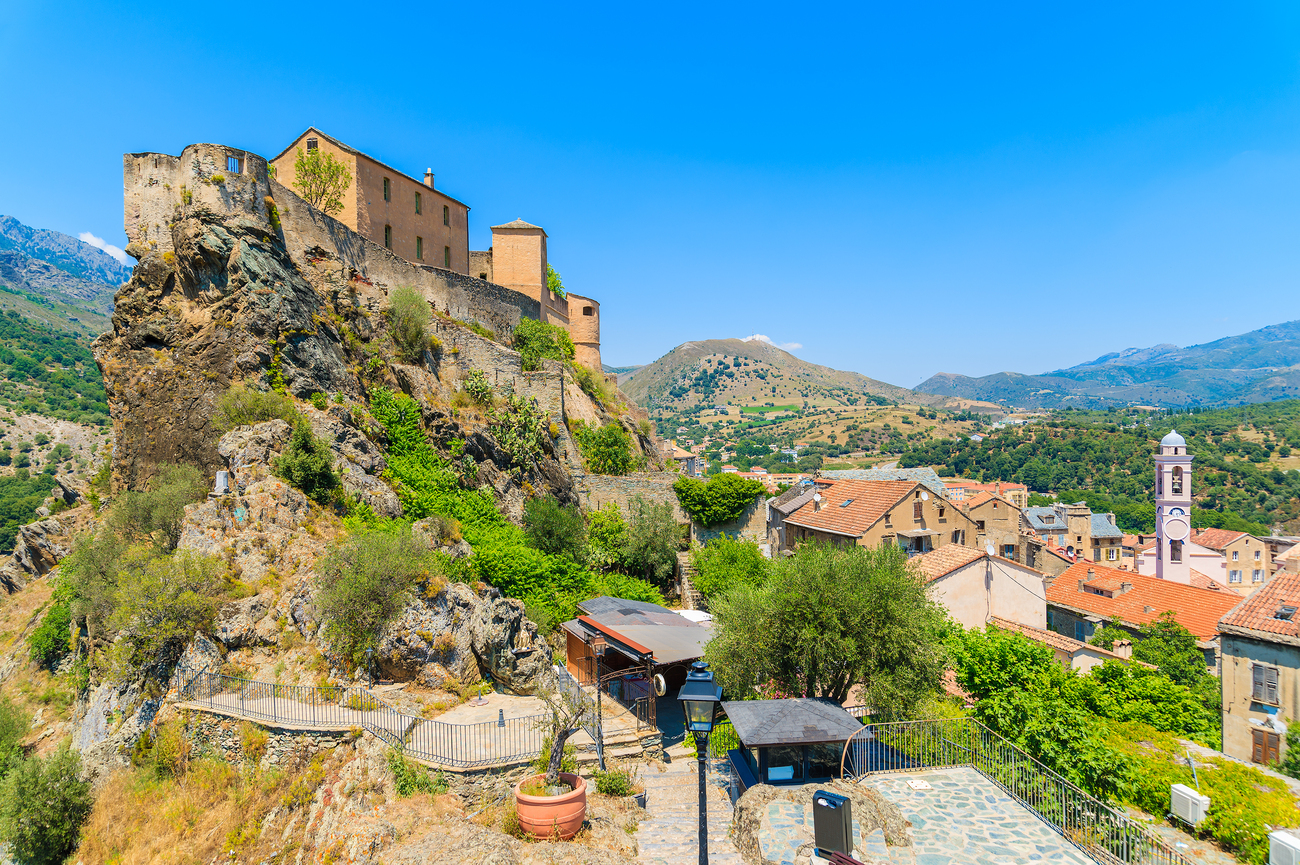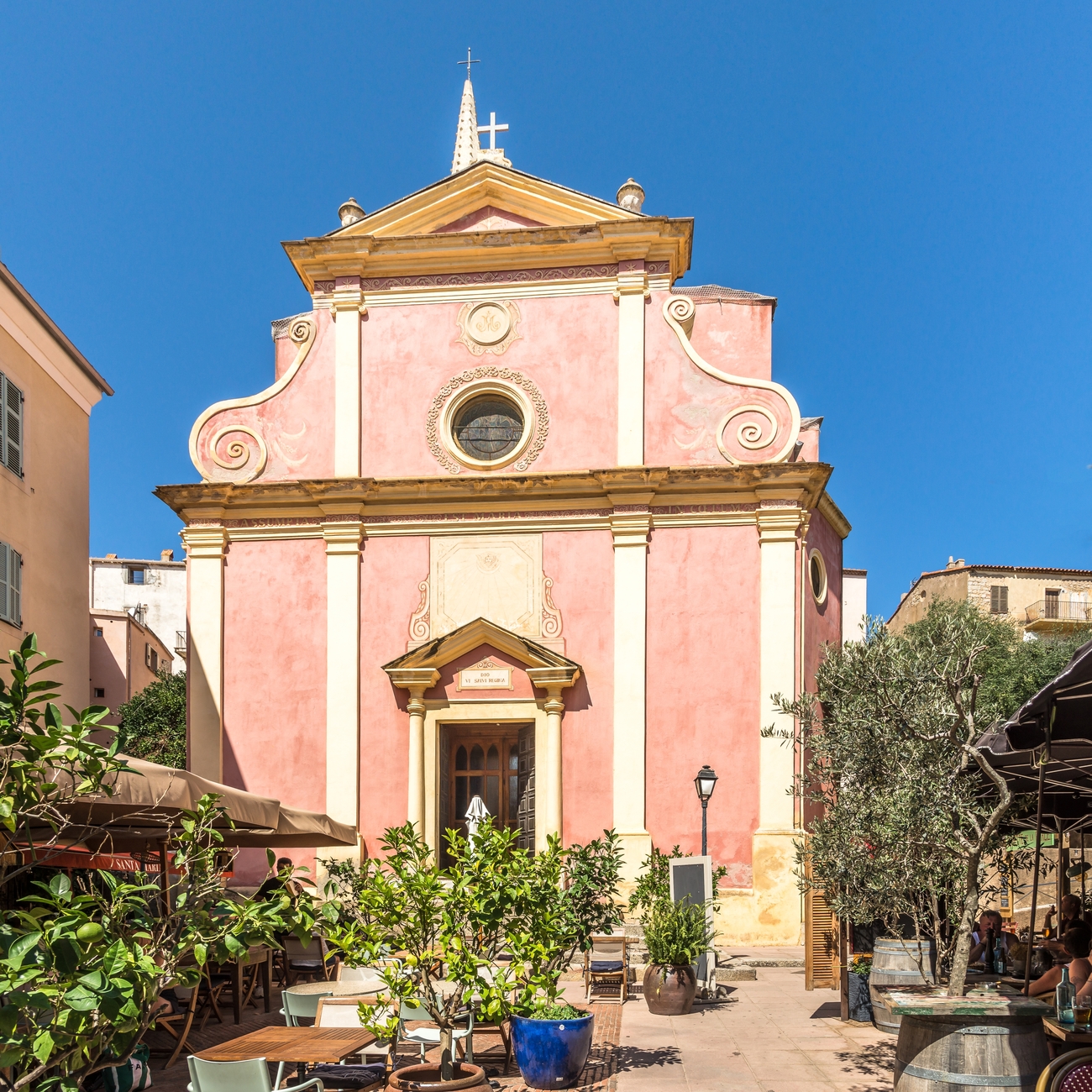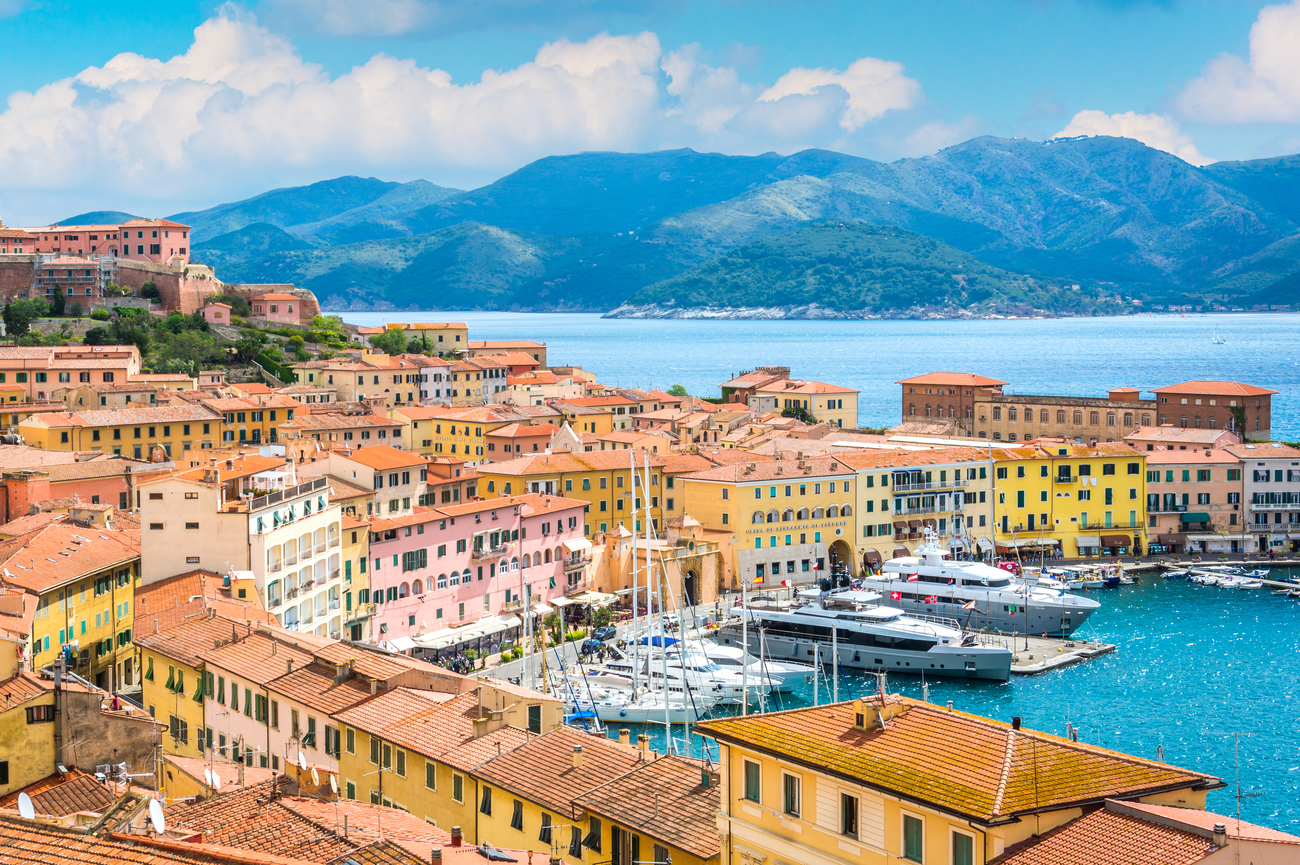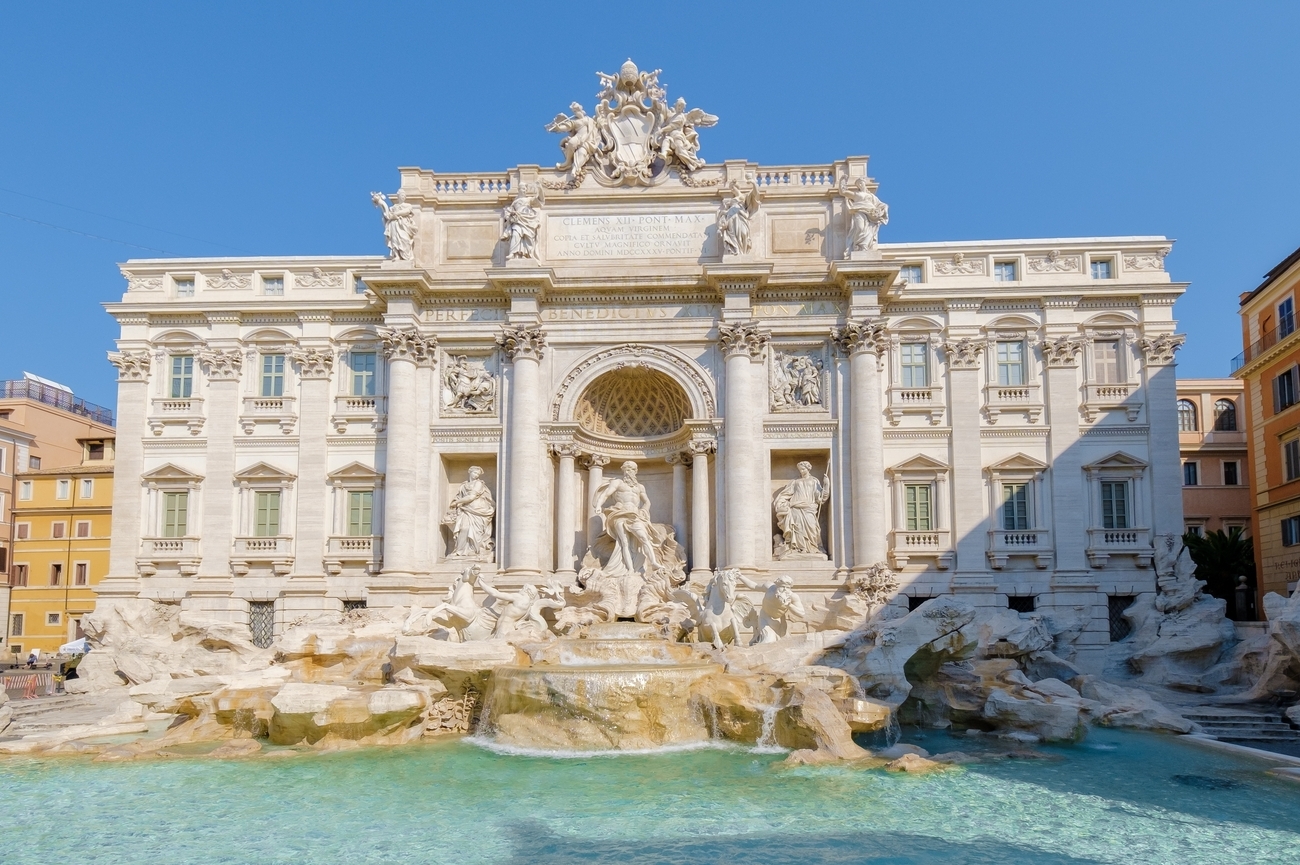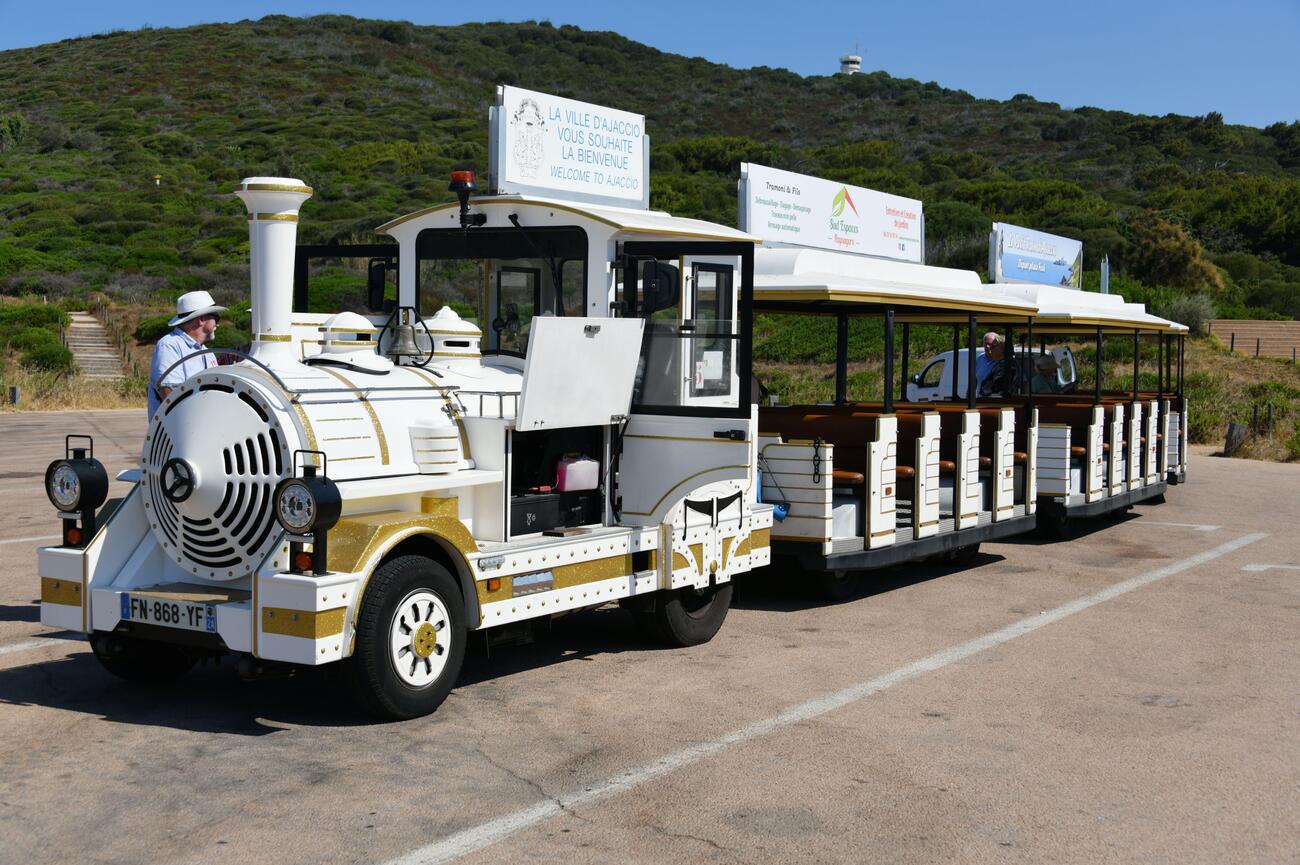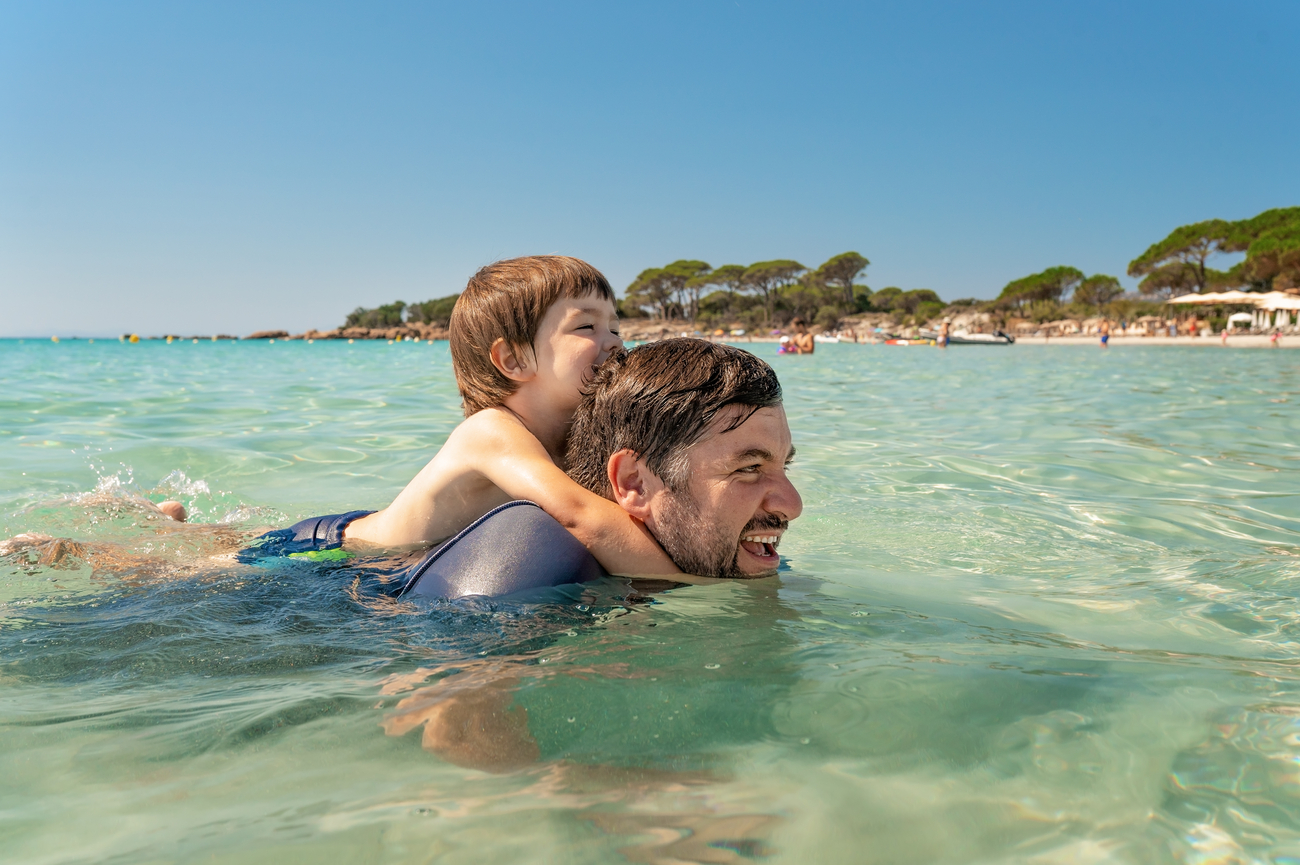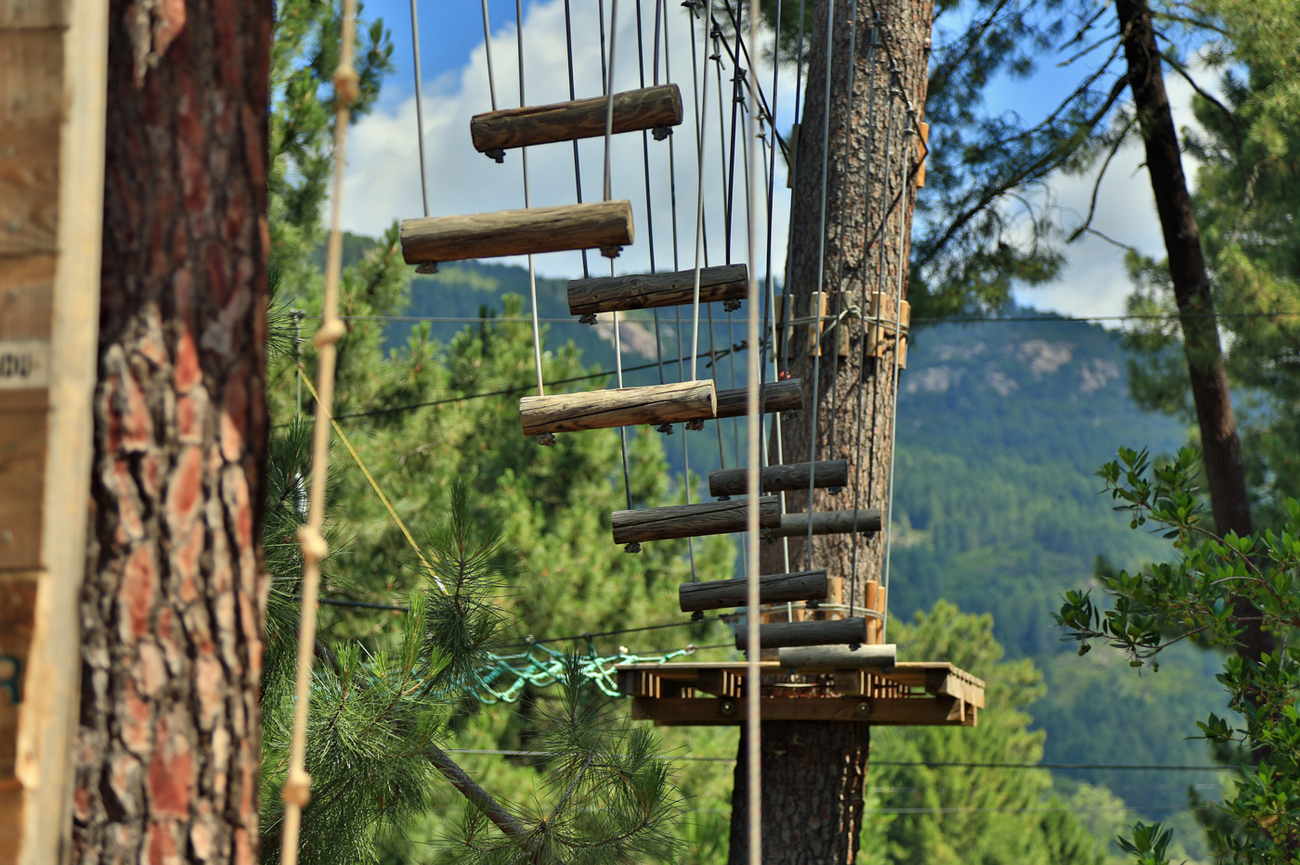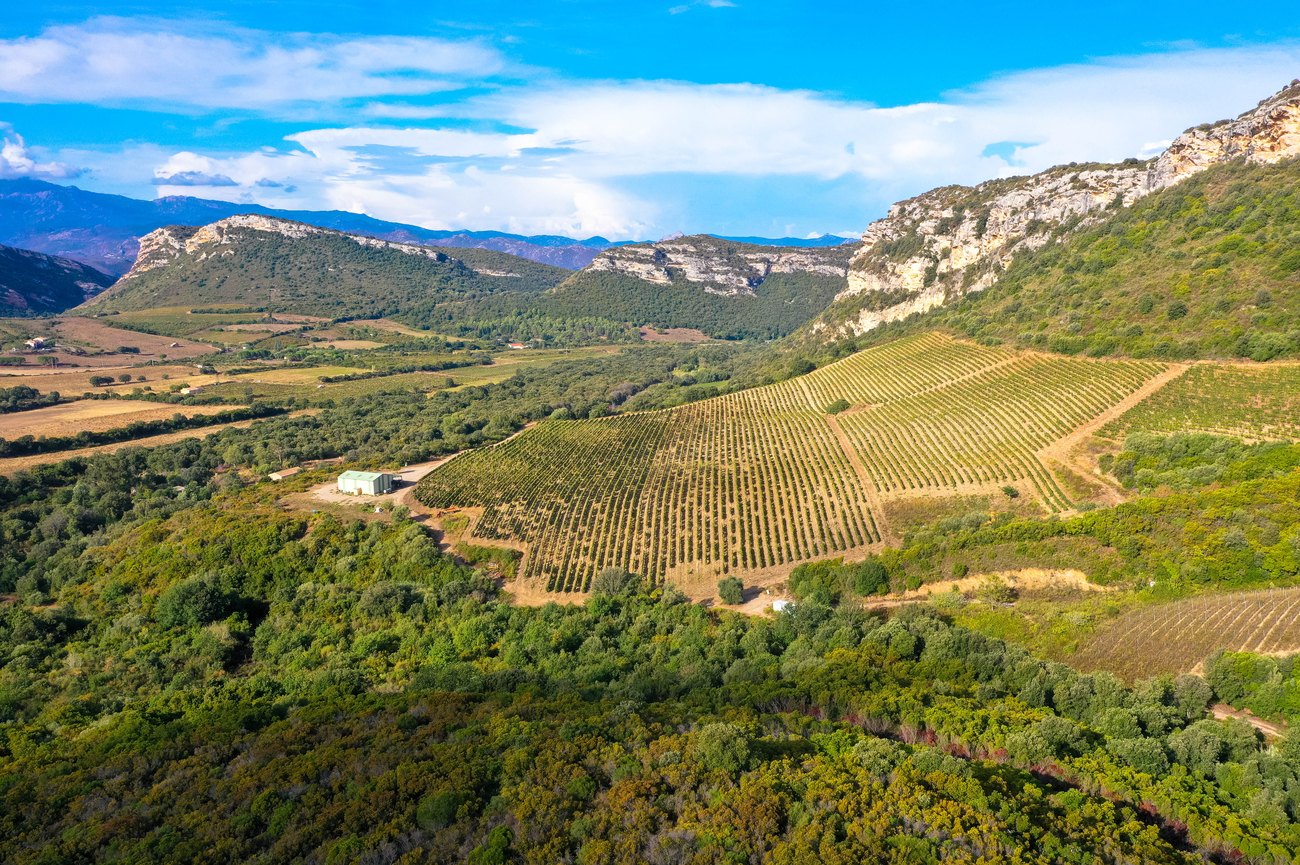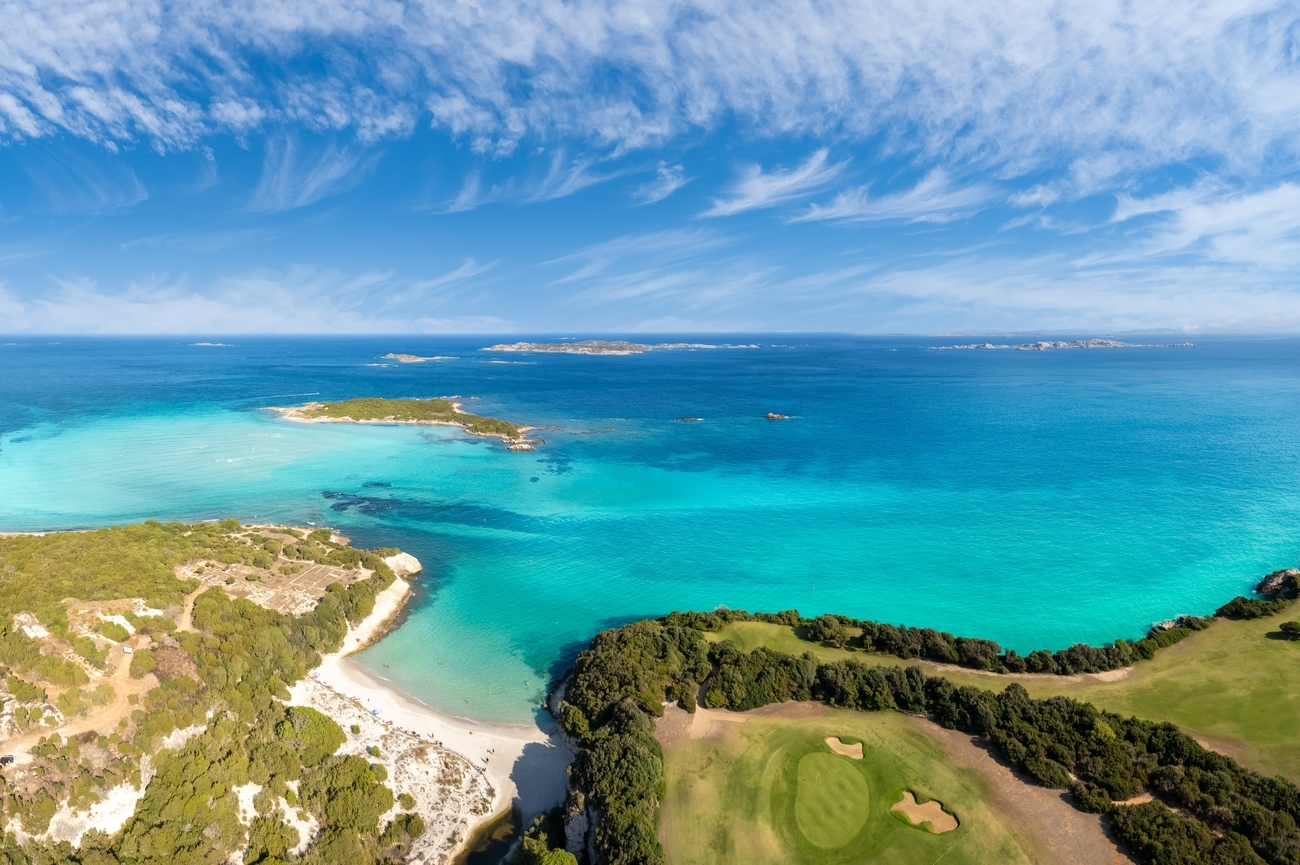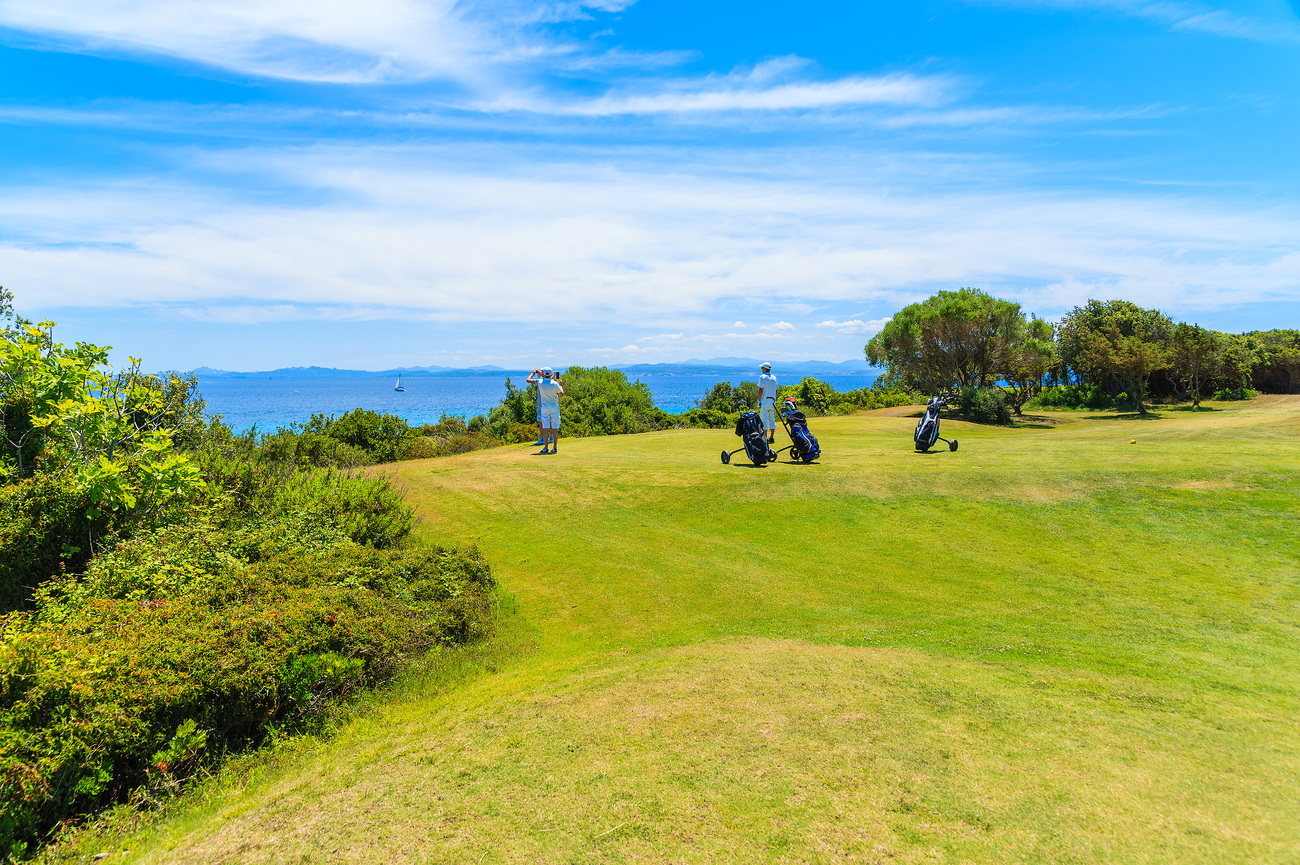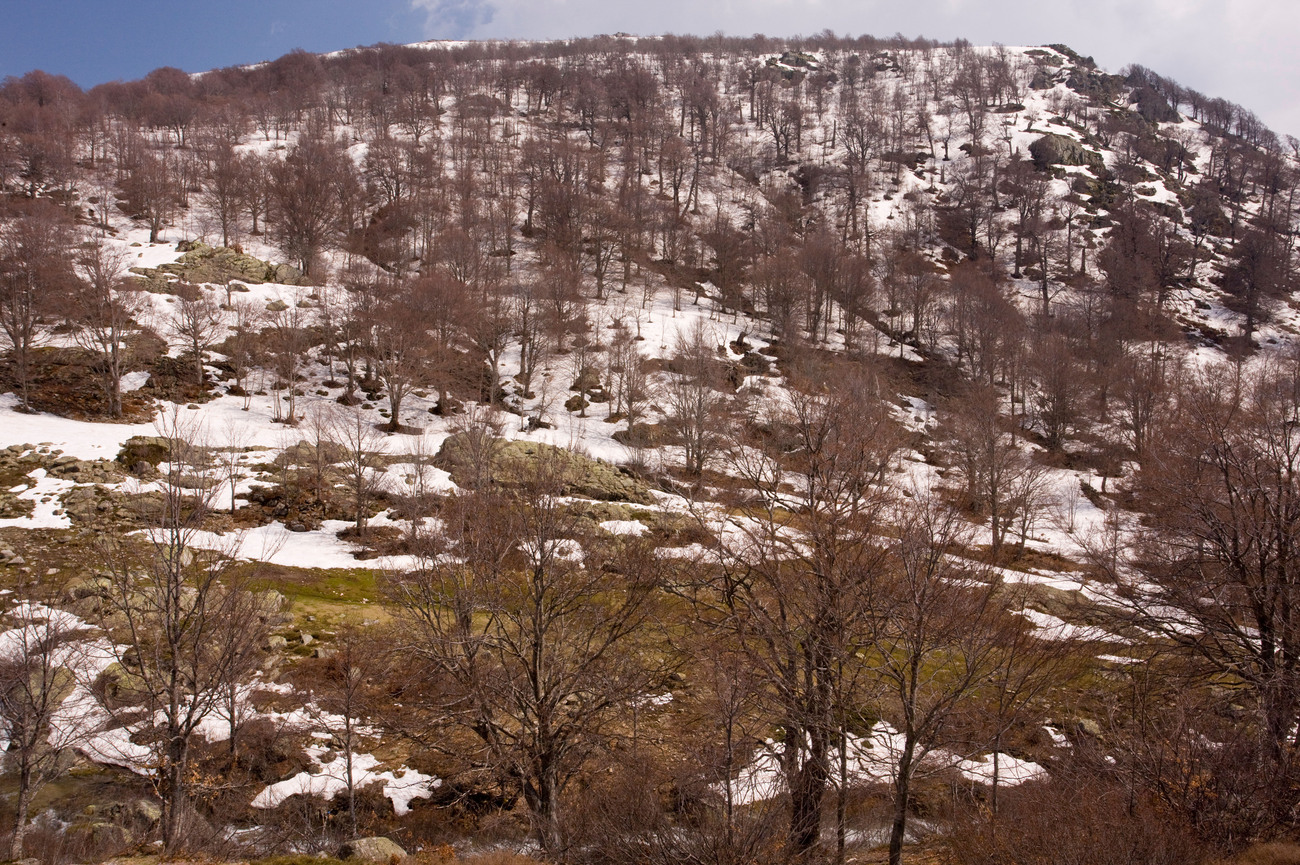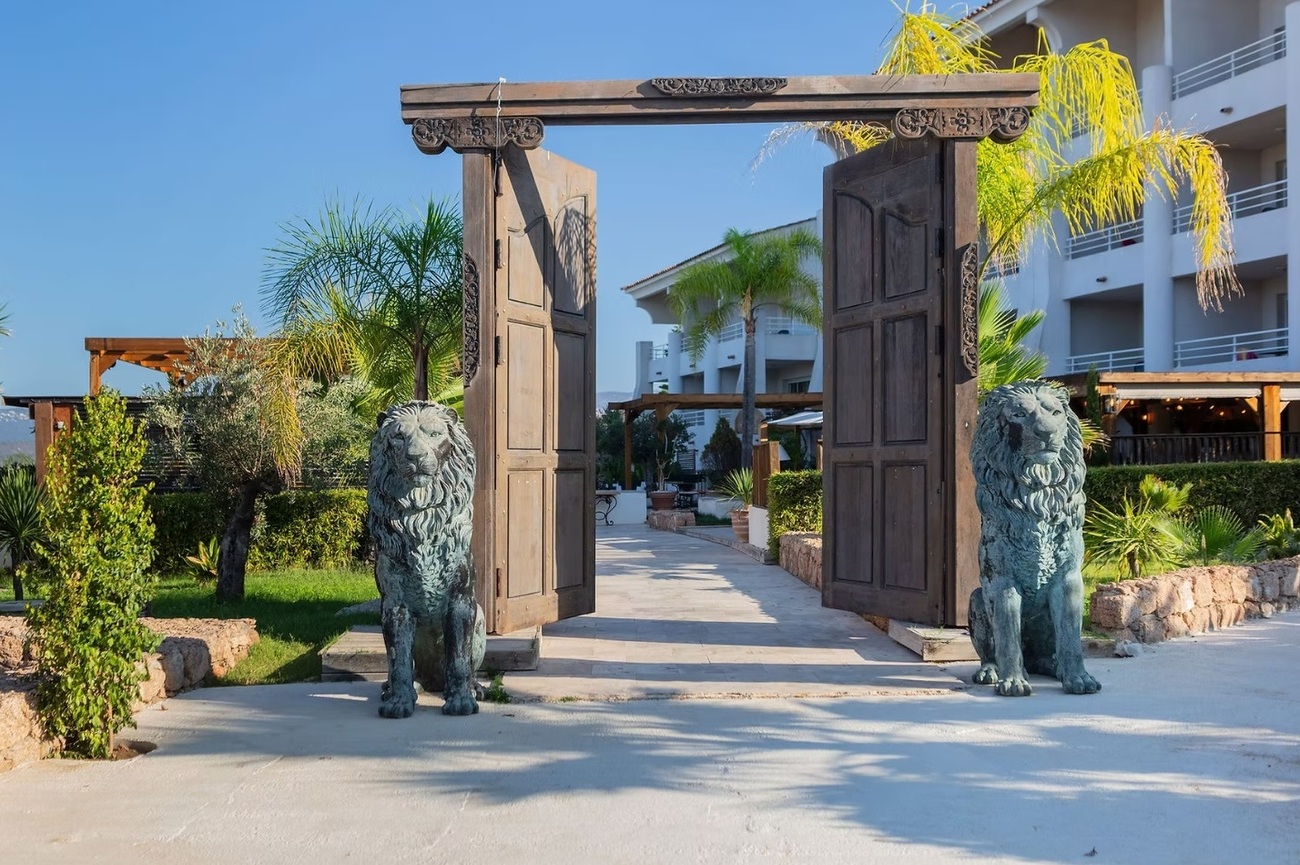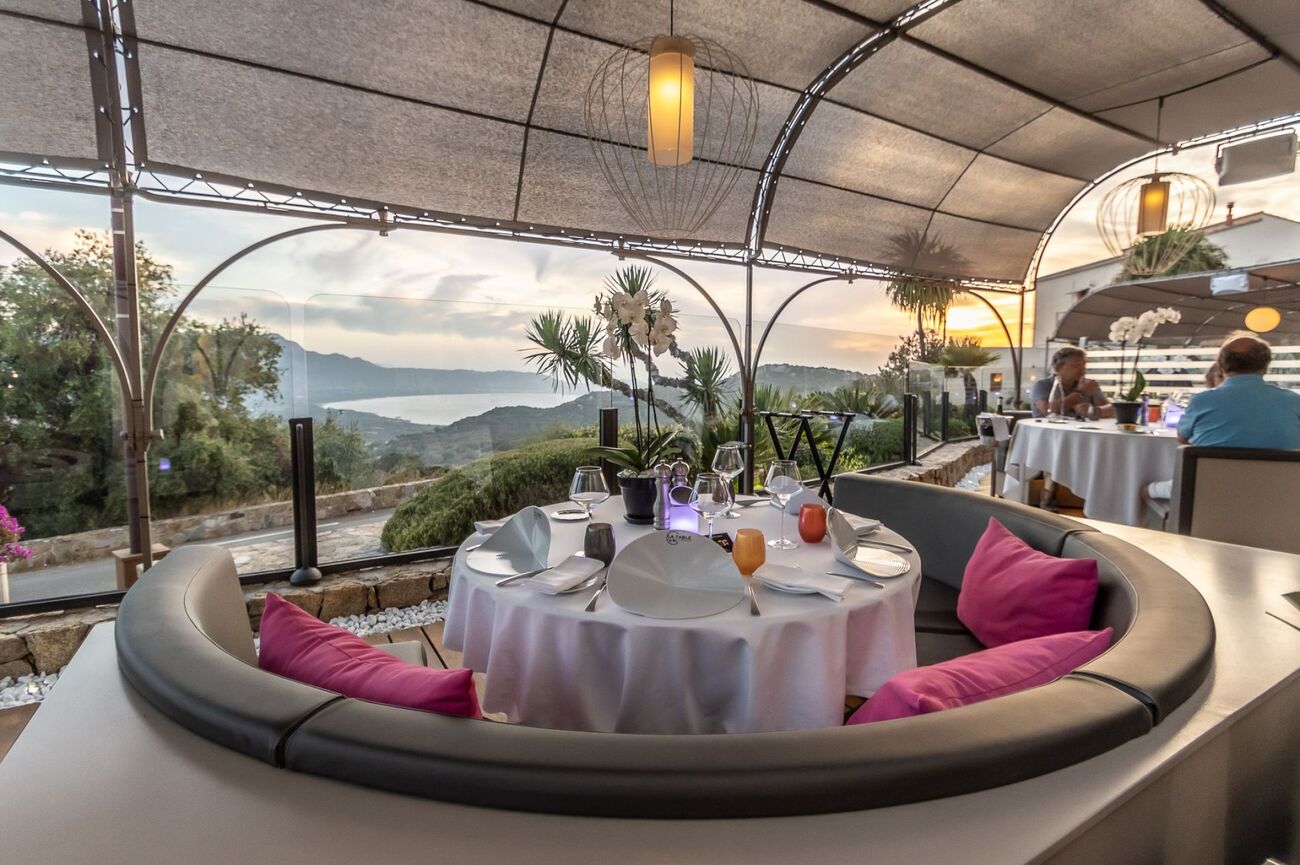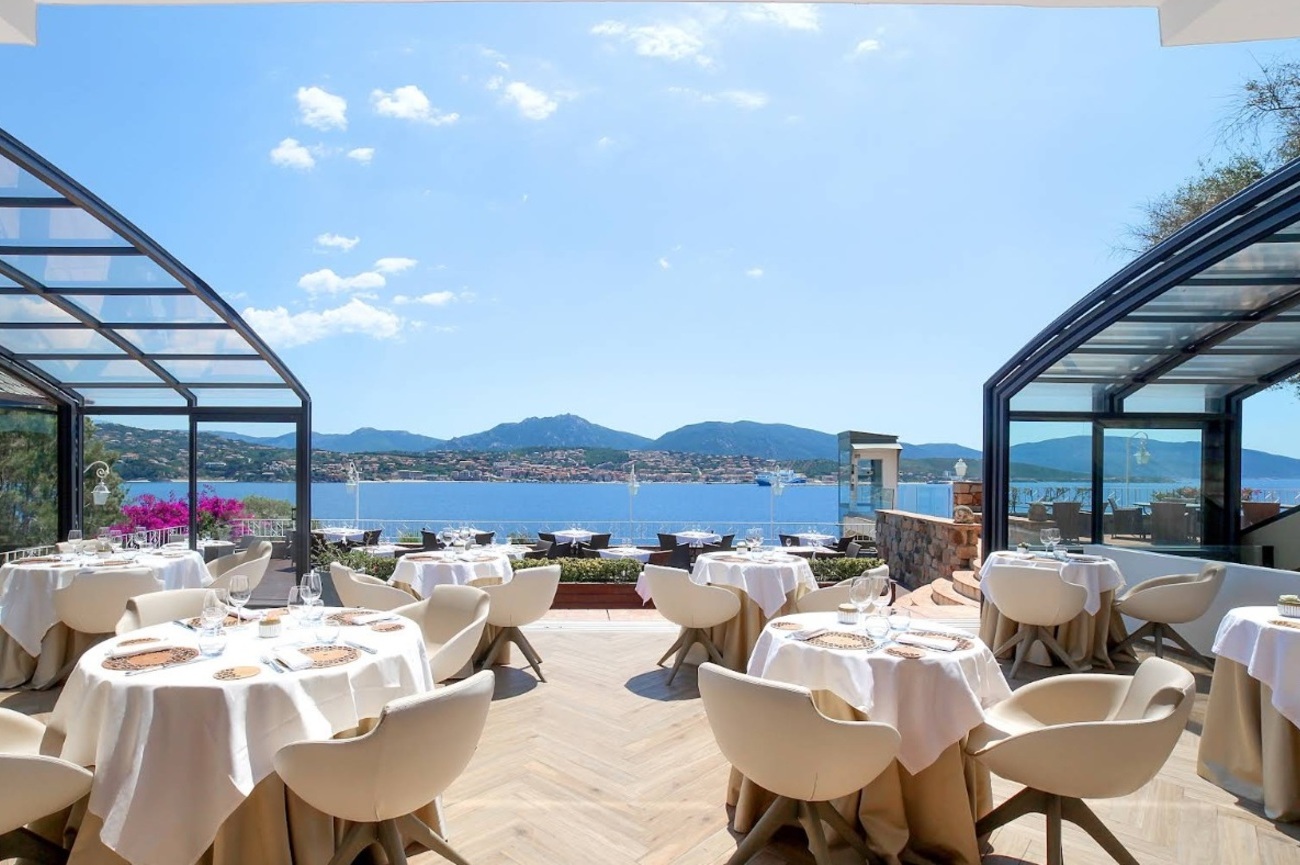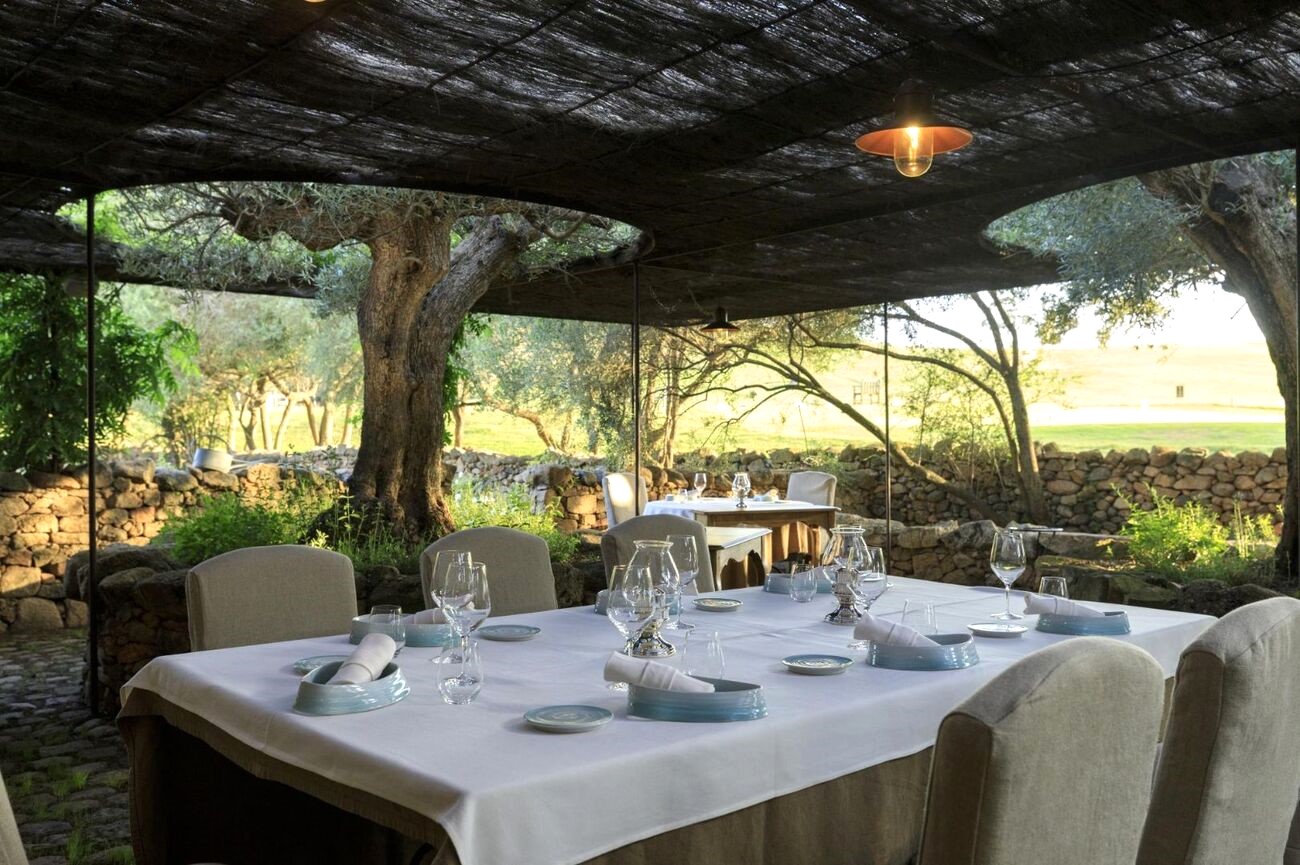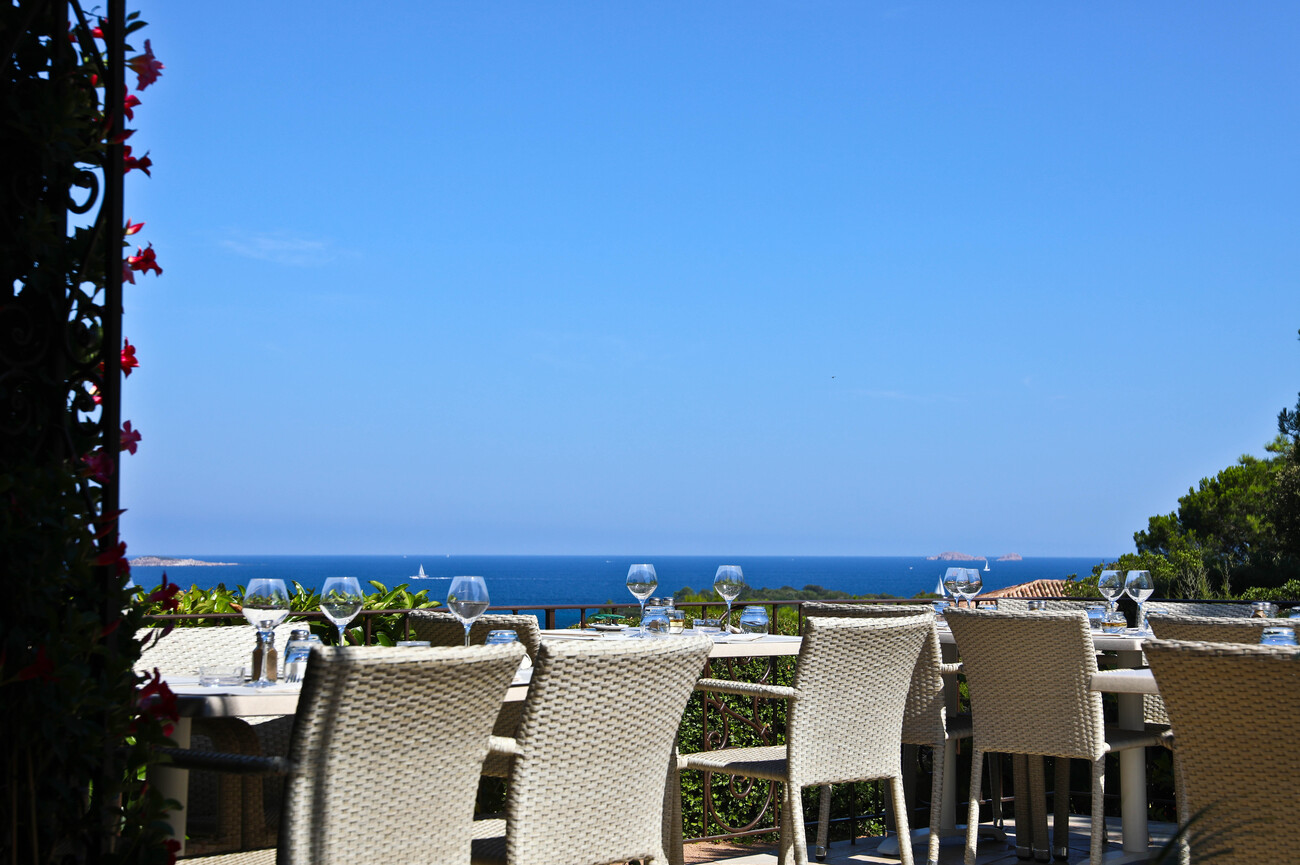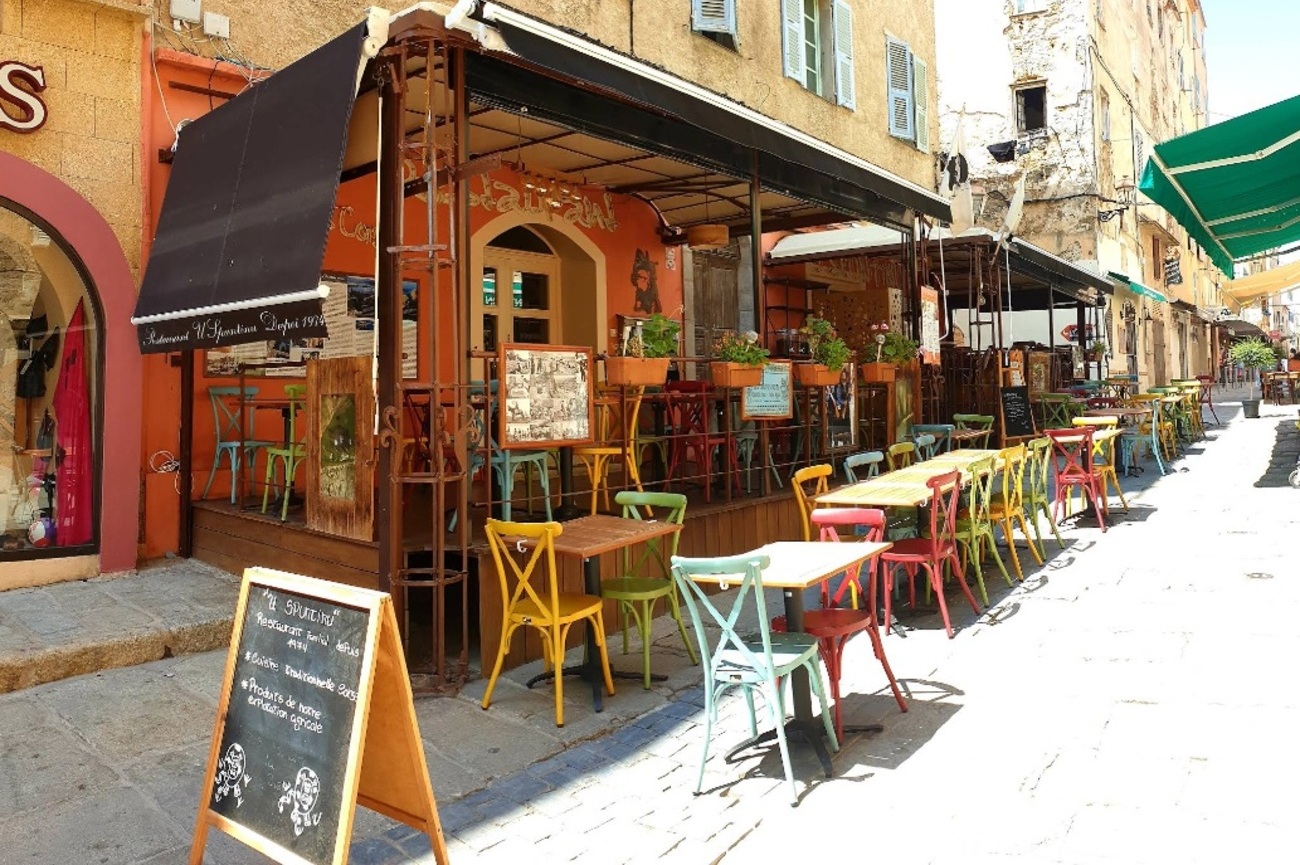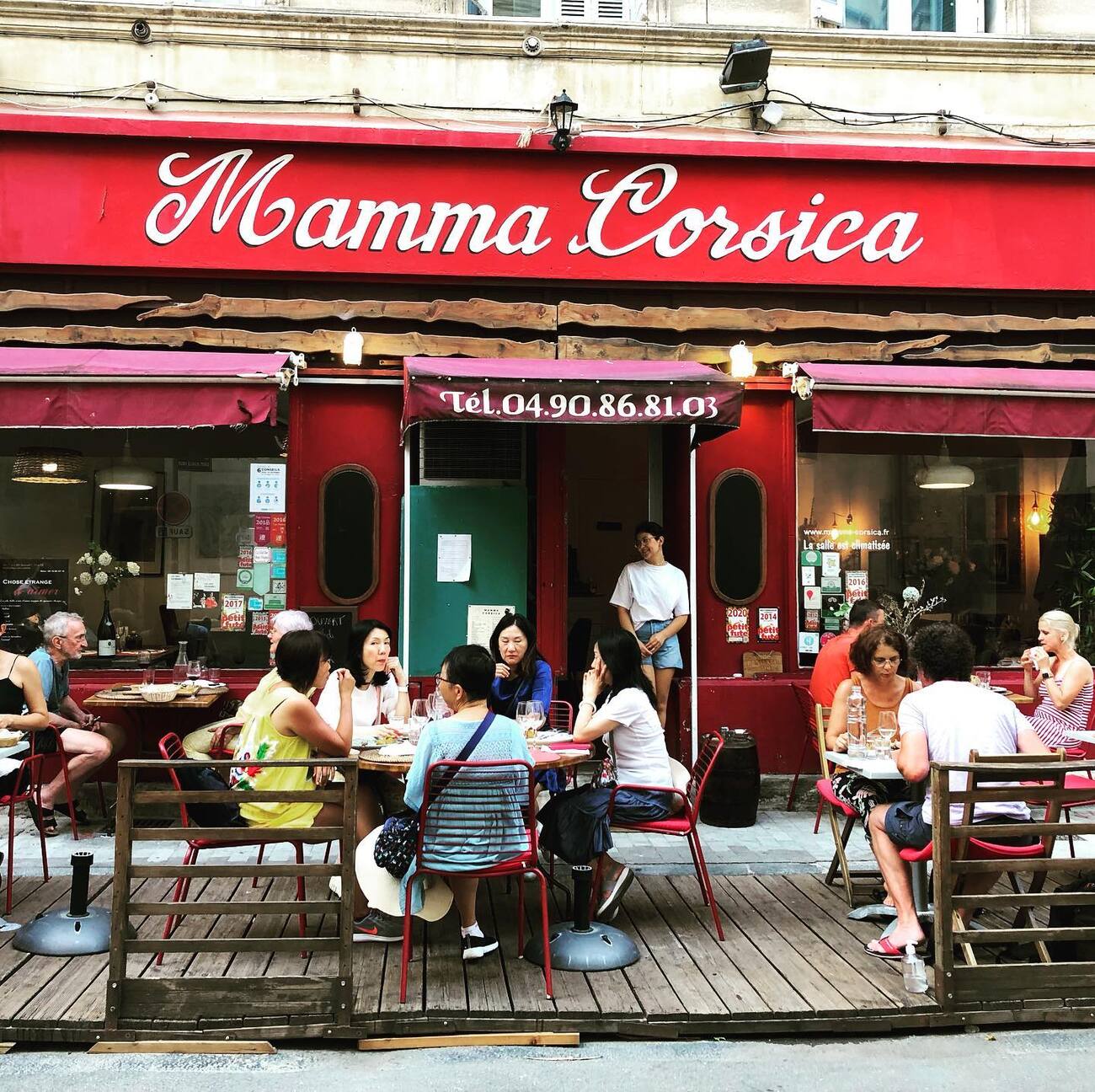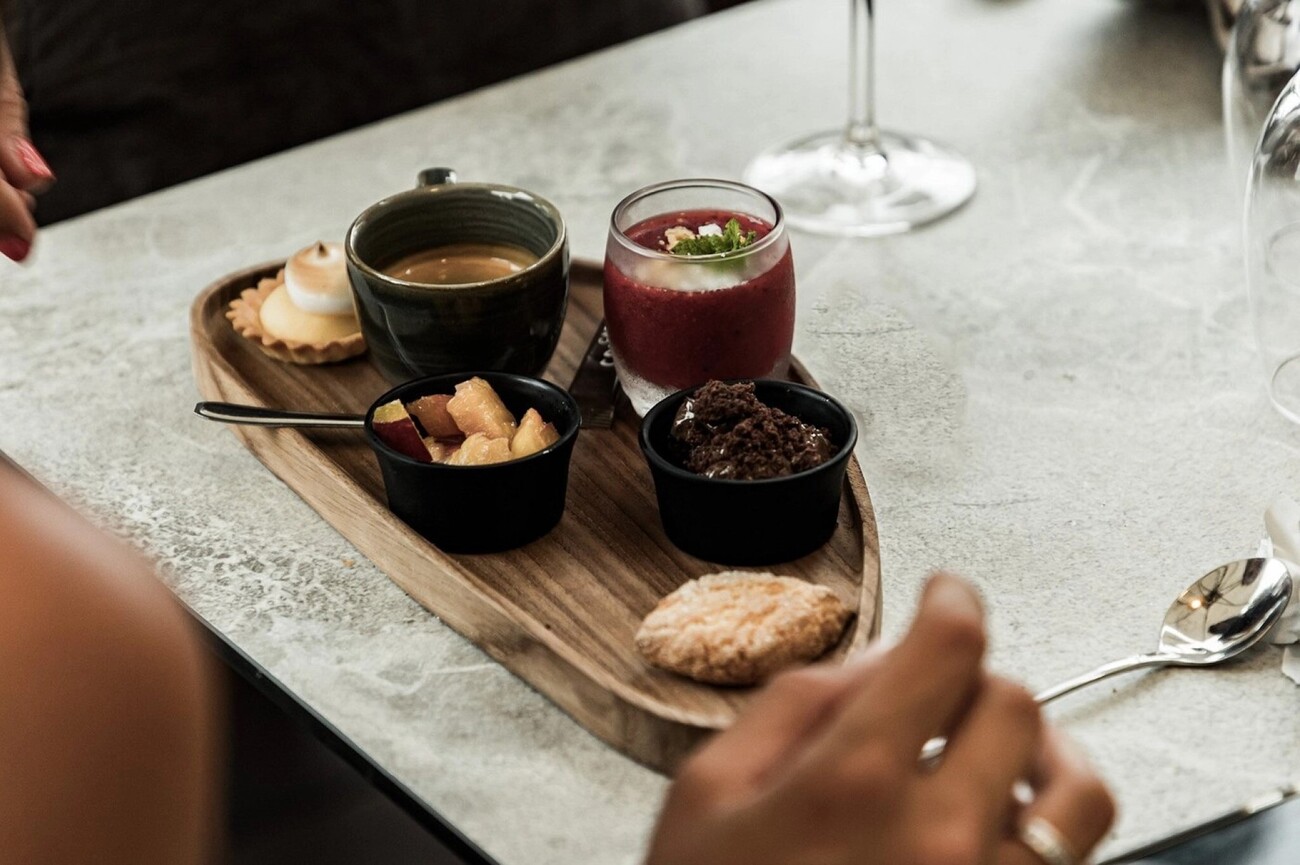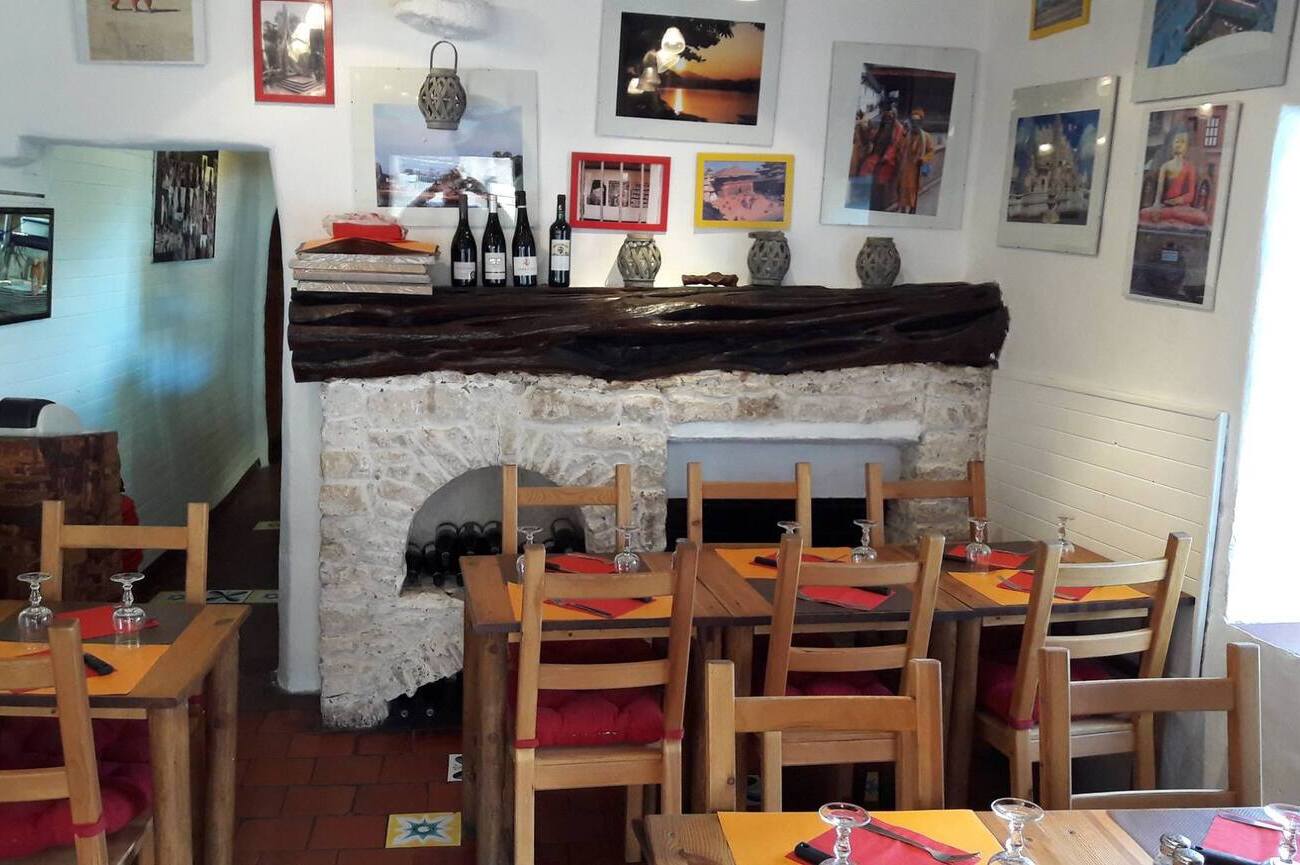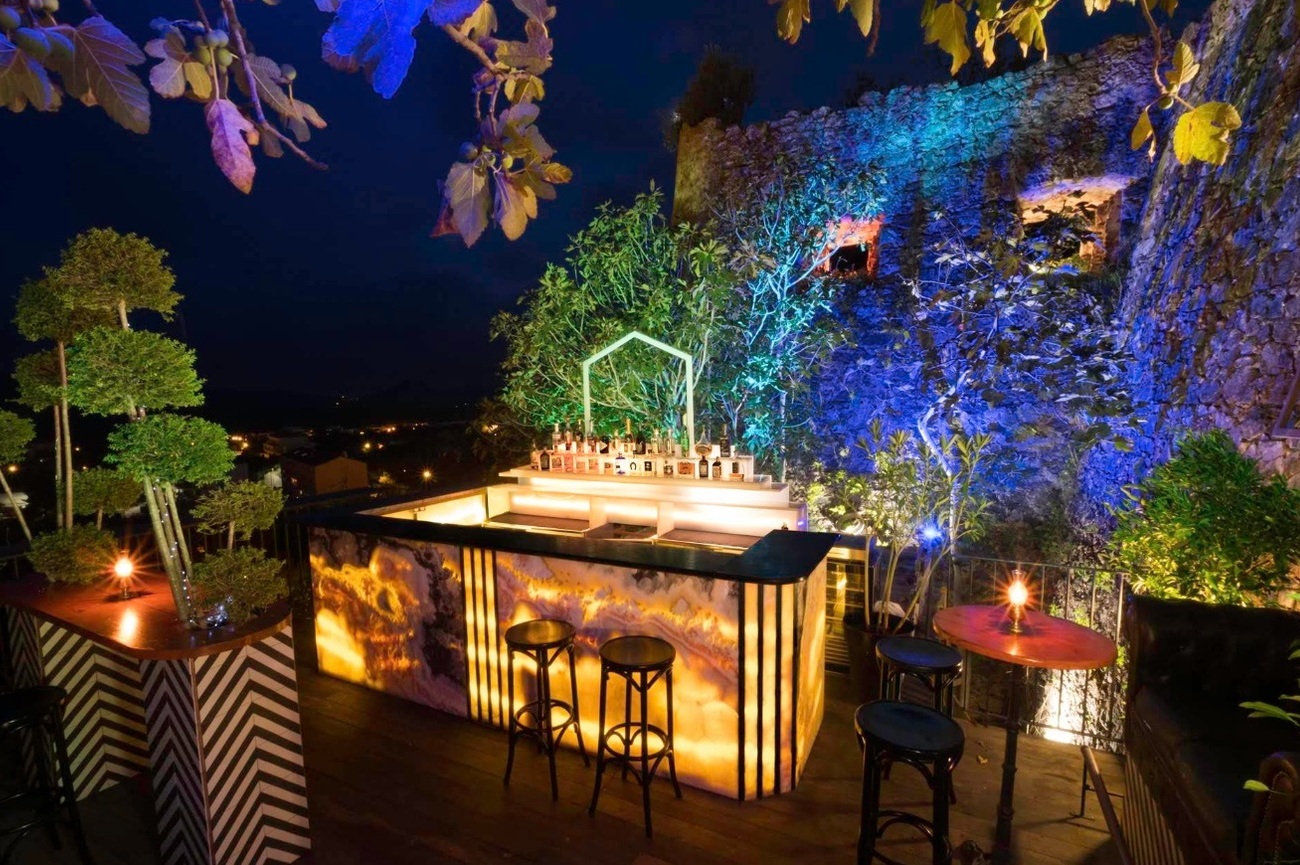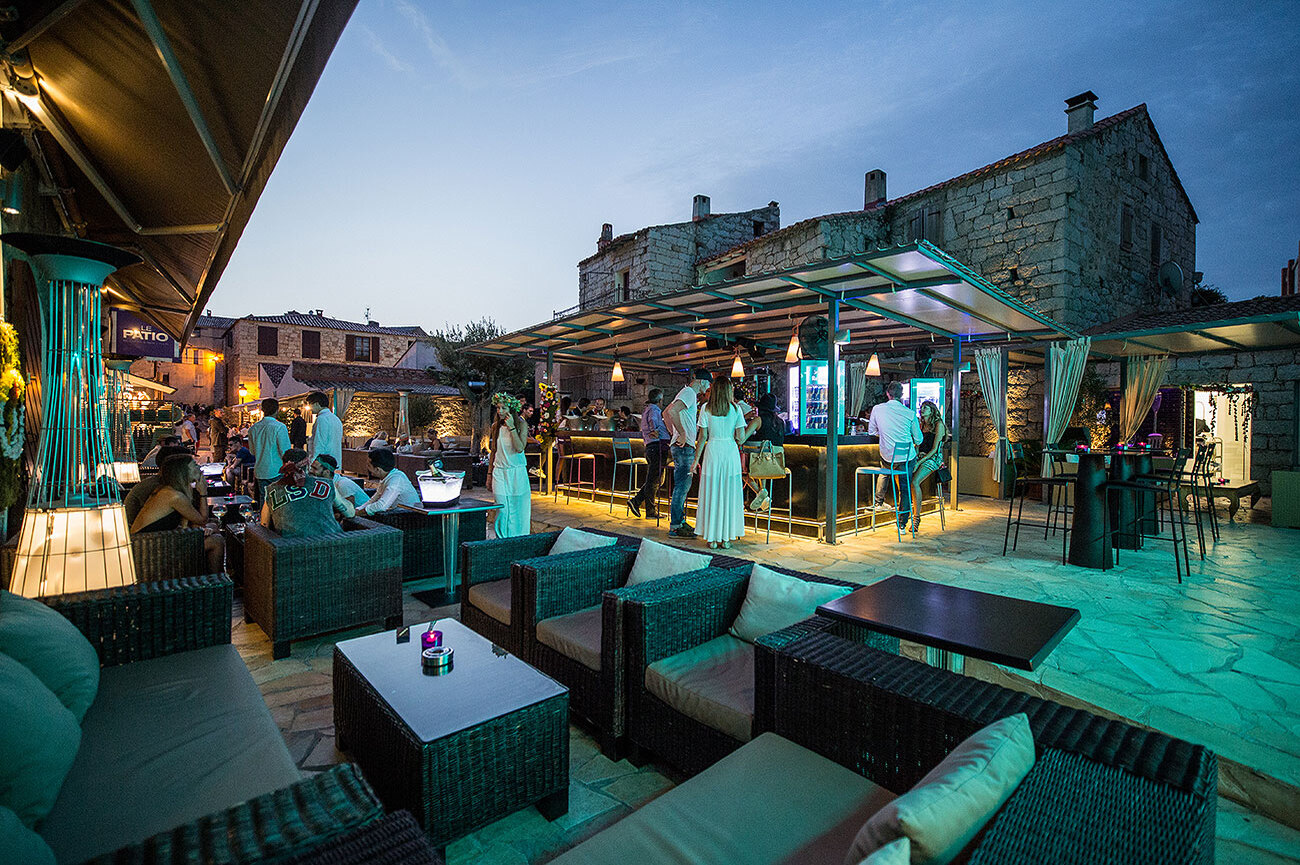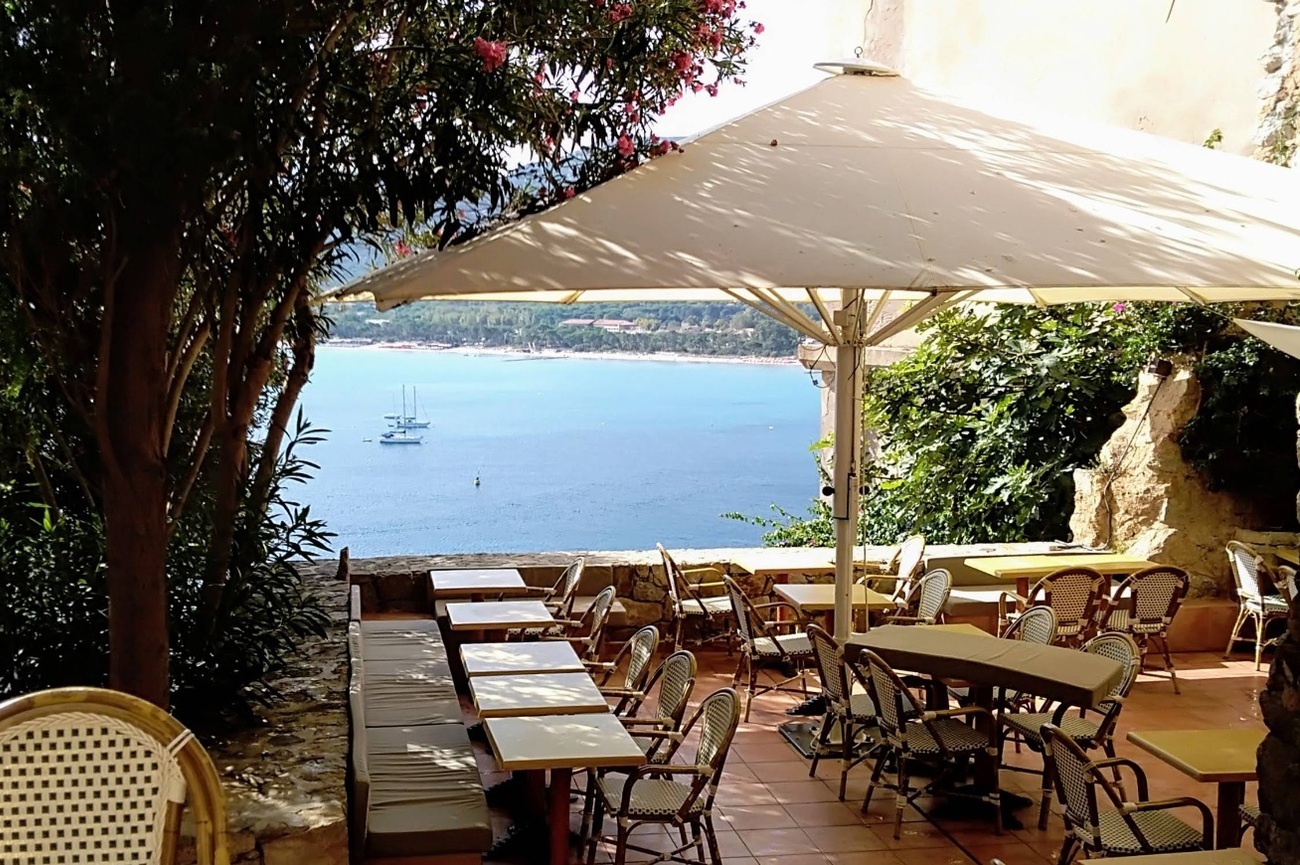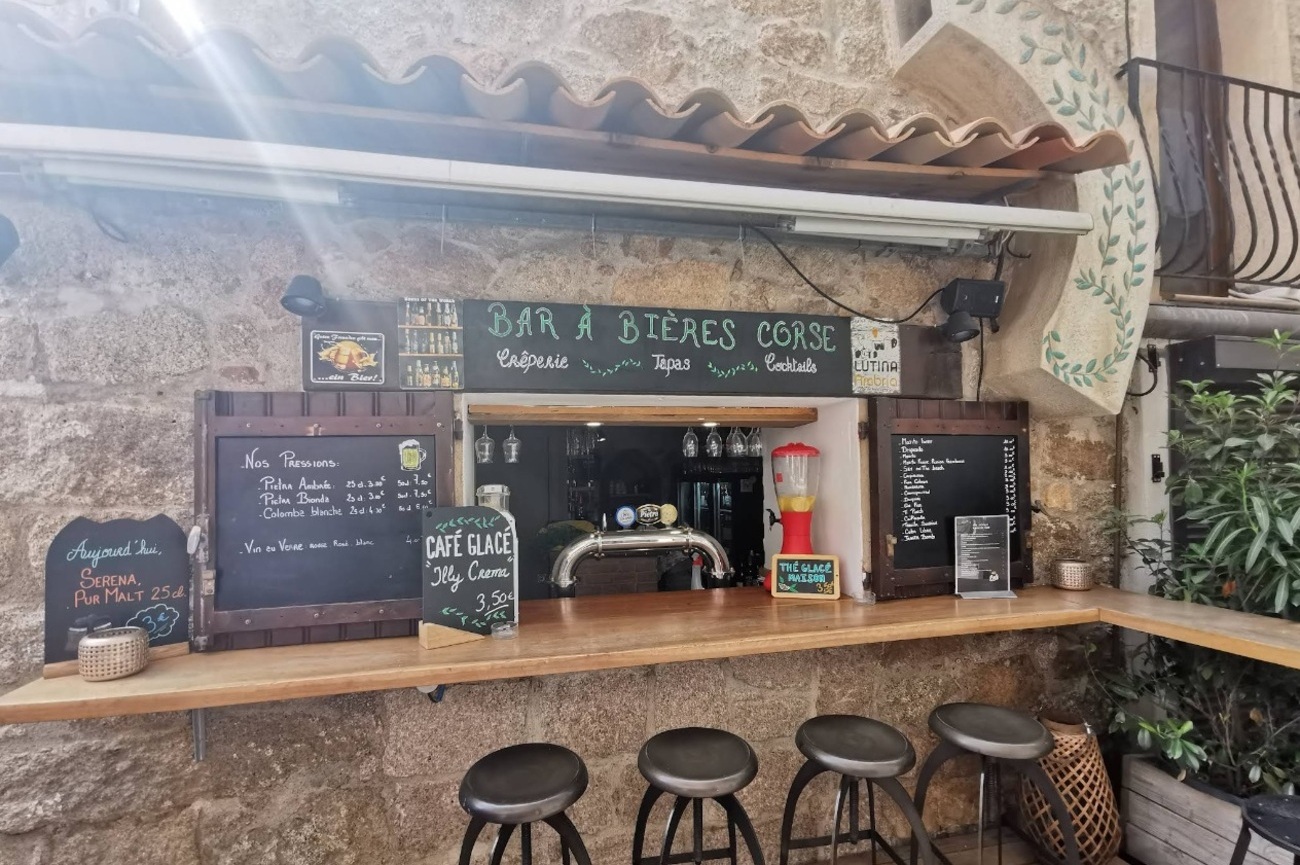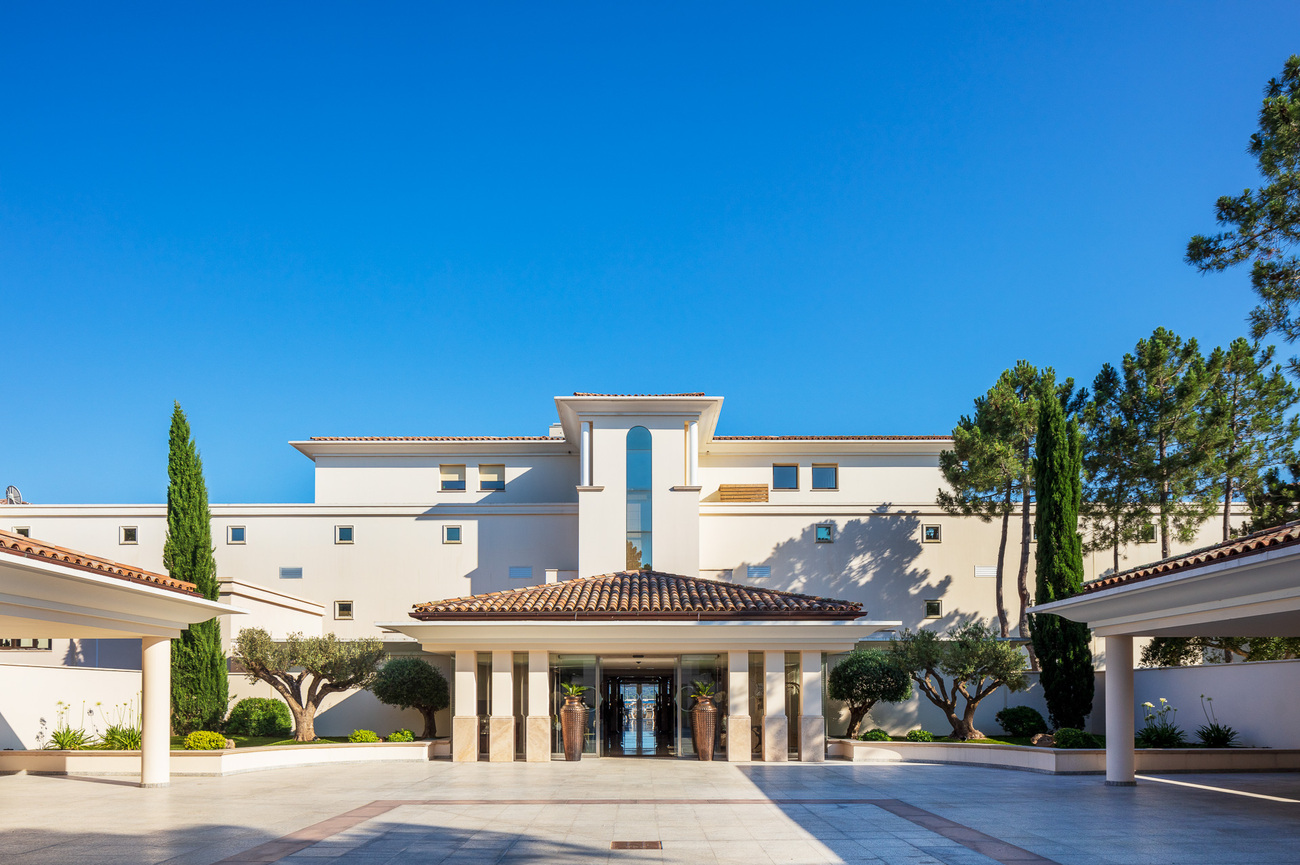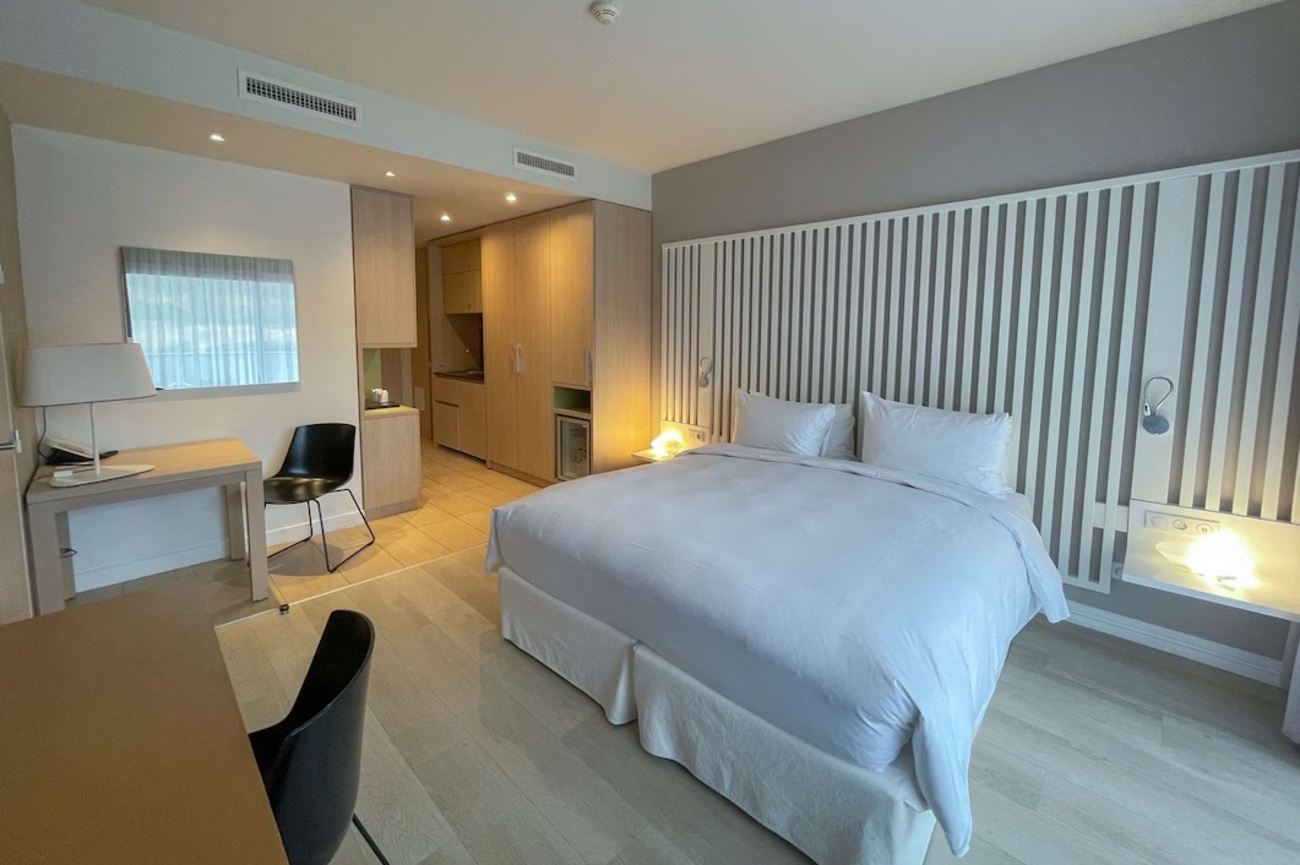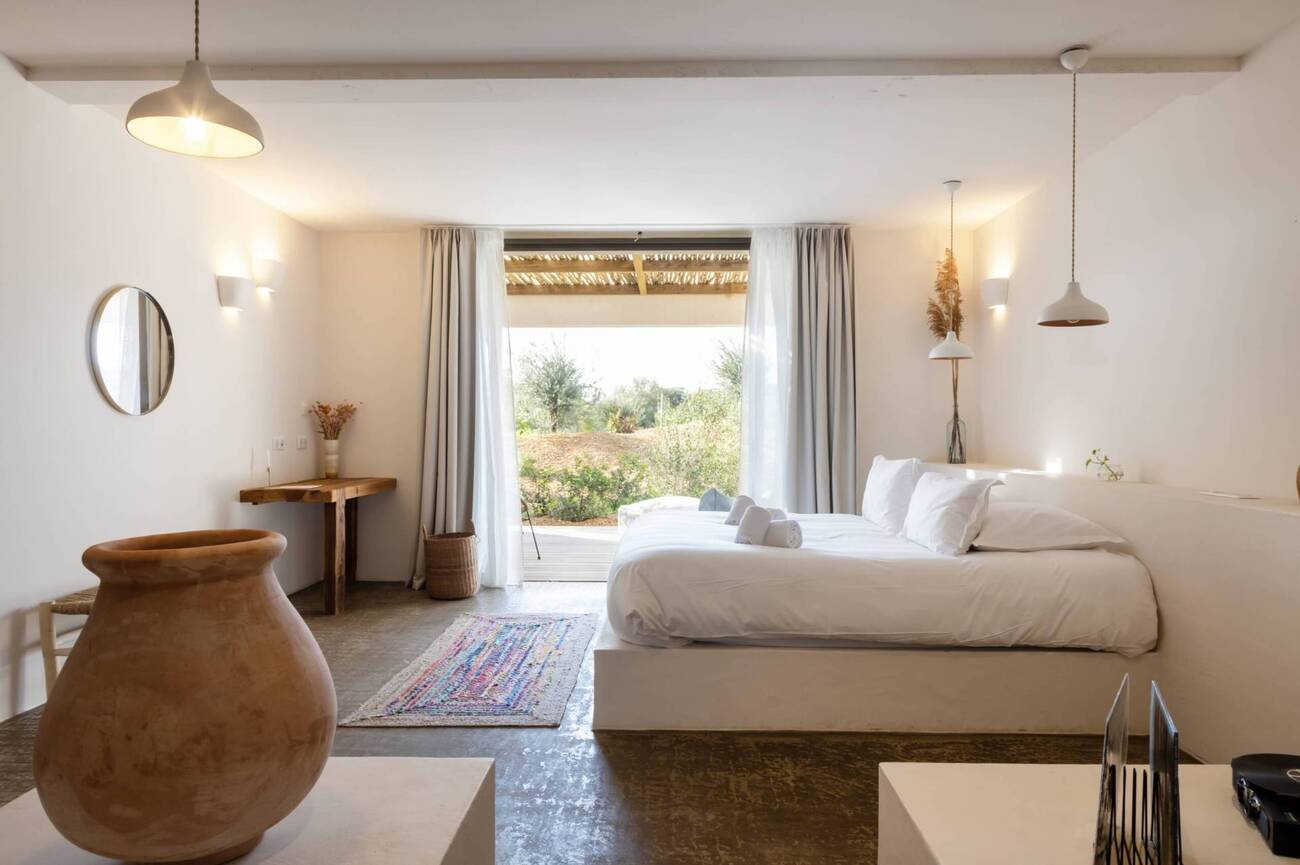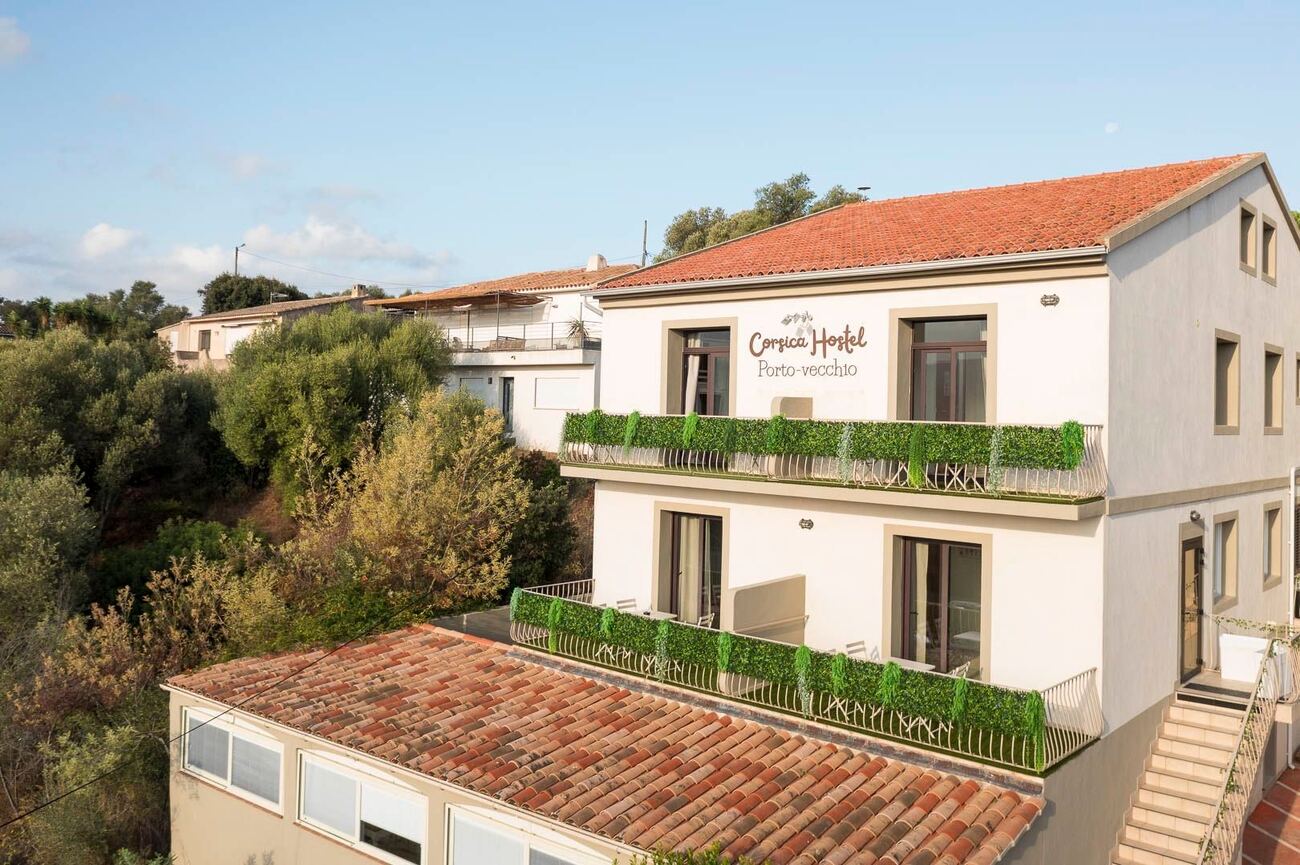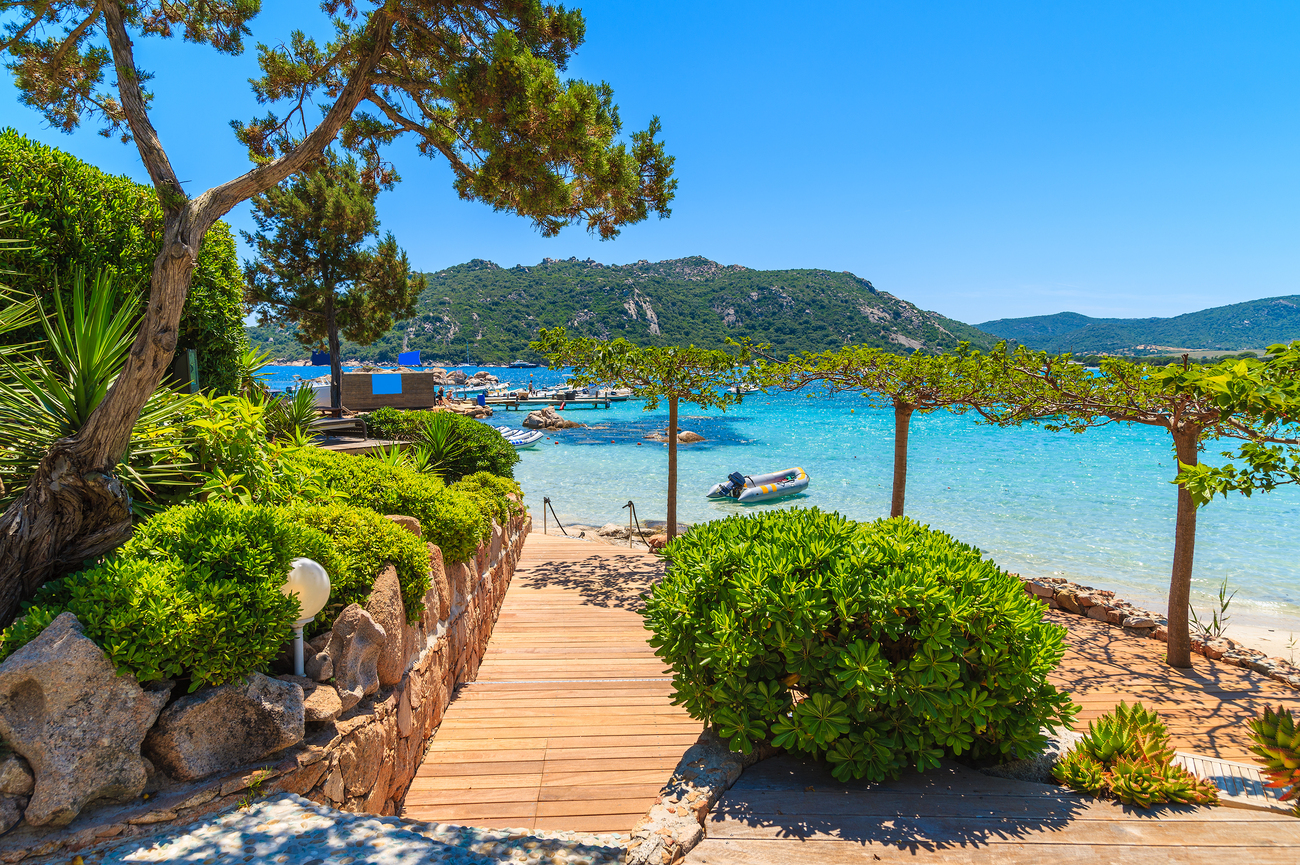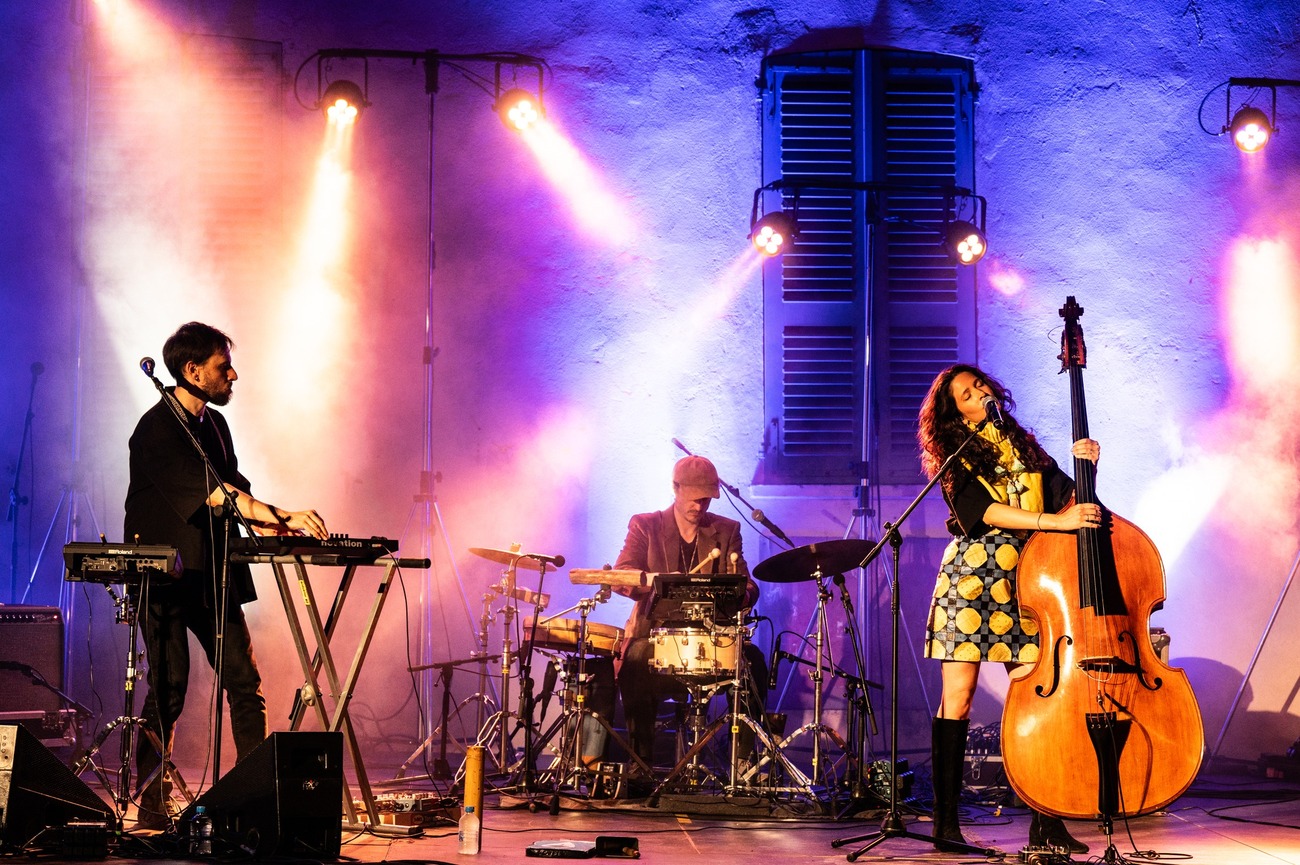Things to Do in Corsica: 3-Day Itinerary
Corsica doesn’t do subtle. It struts in with cliffs that look impossible, beaches that look illegal and a history that could out-dramatize an opera.
This island is layered, like its cliffs, offering sharp contrasts that somehow fit together perfectly. In Ajaccio, history isn’t behind glass; it walks beside you in the streets where Napoleon grew up. And a few hours away, Porto-Vecchio unfolds with beaches so clear and calm they feel more like silk than sea. Then there’s Bonifacio, a citadel balanced on the edge of limestone cliffs, staring down the horizon. There’s a perfect balance of thrills and chills in Corsica.
Corsica plays by its own rules. It’s French, but with an Italian accent and Corsican punchlines. Luxury here isn’t flashy. It hides in a private cove, winks from a fortress wall and sneaks up on you when the light hits the limestone just right. The island doesn’t just give you sights; it gives you an attitude adjustment.
And since we know you’d rather be sipping views than scrolling maps, we’ve lined up a 3-day itinerary that stitches together the island’s history, beaches and cliffs into one seamless showstopper. Pack your bags and get ready to enjoy oh so Corsica.
Day 1

Morning: Maison Bonaparte
We’re starting bold, with Napoleon himself. Or at least, his childhood home.
Maison Bonaparte is where the island’s most famous son learned to crawl before he learned to conquer. The walls here aren’t just plaster and stone; they’re layered with family secrets, military ambition, and the kind of humble beginnings that make for excellent “rags to empire” storytelling.
Now, for those who prefer their history served with a side of luxury: private guides can unlock stories beyond the placards, sharing anecdotes only locals whisper about. Some bespoke experiences even arrange early-access tours, so you can explore the Bonaparte family relics in near silence. This spot is usually a highlight in 2-hour private tours where you go on a journey through the historical center or Ajaccio. No crowds, just you, the echoes of empire and a staircase Napoleon may have tripped down as a boy.
Vieux
Ajaccio
From Maison Bonaparte, it’s a light five-minute stroll to the beating heart of Vieux Ajaccio. Yes, this is the kind of walk where history casually bumps shoulders with daily life. One moment you’re passing pastel facades with laundry strung like banners of everyday victory, the next you’re standing in front of baroque churches that seem to have been designed to show off.
Here’s the fun part: Vieux Ajaccio isn’t just about cobblestones and corsairs. The streets are sprinkled with artisan boutiques selling Corsican leather goods, embroidered linens and jewelry inspired by the island’s rugged mountains and clear seas. If you’re leaning into luxury, you can book a private guided walk that not only covers the history but also unlocks tucked-away ateliers where the best pieces never make it to shop windows.
And don’t be shy about slowing down. Corsica rewards a leisurely pace. In fact, the best way to experience the old town is to let yourself get a little “lost.”
Fesch
Museum
From the winding alleys of Vieux Ajaccio, it’s a short ten-minute walk to a place that feels surprisingly grand for such a compact city: the Fesch Museum.
This is Ajaccio’s trump card. It has an art collection so refined it could hold its own against the big leagues in Paris or Rome. Cardinal Joseph Fesch, Napoleon’s uncle, clearly had an eye for masterpieces (and perhaps a flair for showing off). Today, his legacy sits in this elegant palace.
The museum has recently reimagined its layout with a new chronological visiting route. You begin at the top, on the third floor, surrounded by the Italian Primitives, and then descend, floor by floor, like you’re moving through time itself. Along the way, heavy hitters like Botticelli, Titian, Veronese and Baron Gérard set the pace, while Corsican painters of the 20th century add a local, modern flourish at the end of the journey. Each floor truly has its own personality.
Afternoon:
Archipel
des Sanguinaires
After a morning of marble busts and Botticelli brushstrokes, it’s time to swap hushed galleries for crashing waves. From central Ajaccio, the drive out to the Archipel des Sanguinaires takes about 30 minutes, winding along a coastal road that could double as a film set. By the time you reach the tip of the Parata Peninsula, the city feels like a memory.
Now, about that name, Sanguinaires. No, it’s not because anything sinister happened here. The glow at sunset paints the islands blood red, and the 16th-century sailors had a thing for the dramatic.
Exploring here comes with choices. A private boat tour puts you right among the islands with champagne on deck, sea spray in the air and maybe a discreet dip in one of the hidden coves if you’re feeling bold. And yes, you can absolutely eat here. There are seaside restaurants perched along the peninsula where the seafood is as fresh as the salt on your lips. Think platters of oysters and langoustines or a beautifully grilled catch of the day, paired with a glass of crisp Corsican white wine.
Pointe de
la Parata
Once you’ve savored your seafood spread or cruised the waves around the Archipel des Sanguinaires, a short walk or drive lands you at the Pointe de la Parata. This is the ultimate vantage point. The peninsula juts boldly into the sea, almost daring the Mediterranean to knock it down. The real thrill here is the view. Trails snake around the cape, each bend revealing a slightly different angle of the islands, the coastline and the endless horizon.
Genoese
Tower
And now for the crown jewel of the peninsula: the Genoese Tower. Standing tall since the 16th century, this circular stone sentinel was once part of a whole network of coastal defenses against pirates. Today, it’s less about warning cannons and more about winning hearts. This is not just about the view; it is also about the story.
The short hike up isn’t too demanding, and every step rewards you with more of the sea spread out below. In the late afternoon, it transforms into a natural stage where the Sanguinaires Islands start glowing red as the sun prepares its curtain call.
Capo di
Feno
Now this is worth the 20-minute drive. This stretch of sand is split into two personalities: Grand Capo, wide and untamed, perfect for surfers chasing the island’s best waves and Petit Capo, a smaller cove tucked away for those who like their beach days with a side of seclusion. Either way, the vibe is pure Corsican freedom. But don’t mistake rugged for rustic. Luxury experiences here take the form of private beach setups, where loungers, parasols and chilled rosé appear as if by magic.
Evening:
Place Foch
A 25-minute drive back into Ajaccio and you will be landing in the city’s beating heart. This is Place Foch. This square is lined with palms, punctuated by fountains, and, of course, crowned by a statue of Napoleon striking his best “Roman emperor” pose. Subtle? Hardly. But that’s exactly why it works. By evening, the atmosphere is electric. Cafes spill into the square, music hums from the corners and the air feels like it’s fizzing with conversation. Luxury travelers can elevate the experience with a curated aperitivo tour here, complete with sommelier-selected Corsican wines and charcuterie delivered straight to your table.
Port Tino
Rossi
From Place Foch, it’s just a 10-minute stroll downhill to Port Tino Rossi, Ajaccio’s glittering waterfront. By day, this harbor is busy with yachts slipping in and out; by night, it turns into the city’s catwalk of lights.
This is where fishing boats mingle with million-dollar yachts, and where every passerby secretly checks which deck they’d like to be sipping champagne on. For luxury travelers, private charters can be arranged to end the evening with a sunset or moonlit sail, complete with onboard tastings of Corsican wine and oysters so fresh they practically introduce themselves. If you prefer to stay dockside, private guides often weave this stop into a VIP harbor walk, pointing out historic landmarks while letting you bask in the glow of the Riviera-worthy ambiance.
As the clock nears 9 pm, Port Tino Rossi feels like the perfect finale: the Mediterranean at your feet, the city behind you, and the yachts reminding you that in Ajaccio, even the evenings know how to dress in style.
Day 1 - corsica Tour Map
Day 2

Morning: Citadelle de Porto-Vecchio
Day 2 kicks off with a 3-hour drive from Ajaccio. Trust us, the payoff is worth every winding mountain road and every jaw-dropping coastal view along the way. Welcome to the Citadelle de Porto-Vecchio, the 16th-century Genoese fortress that still presides proudly over the town.
Step through its ancient gates and suddenly you’re walking in the footsteps of soldiers, merchants and rulers who once called this place their stronghold. The cobbled streets are lined with bastions and old stone walls, but today they’re more likely to hide chic boutiques and galleries than cannons. Think of it as the past putting on a designer jacket.
Bastion de France
Five minutes from the Citadelle, and suddenly you’re standing on the Bastion de France. This is a block of history that looks like it was carved straight out of ambition. It’s where the French once muscled into the salt trade, because in Porto-Vecchio, salt wasn’t seasoning, it was currency.
What’s the draw today? The view. From the ramparts, the bay unfolds like a painting that refuses to fit in a frame. The marina below, the Gulf shimmering in the distance, the terracotta rooftops pressed against the sky. It’s one of those vantage points that makes you stop talking mid-sentence.
And if you’d rather not settle for just “looking”? That’s where the luxury comes in. Private morning access can be arranged, complete with a guide who brings centuries of drama to life, or even a bespoke aperitif service on the walls. Yes, sipping local wine above Porto-Vecchio while the fortress does the storytelling. Rugged stone, refined flavors and a view that laughs at postcards. That’s Bastion de France.
Afternoon:
Palombaggia Beach
From the bastion, it’s about a 15-minute drive before the cobblestones give way to Corsica’s most famous stretch of sand: Palombaggia Beach. You’ve probably seen it on the Gram, but trust us, no picture ever really nails it. White sand as soft as powdered sugar, pine trees leaning like they’re trying to sneak into your holiday snaps and water so clear it looks Photoshopped.
This isn’t just a beach, it’s the beach. And yes, you can absolutely eat here. Along the shoreline, you’ll find a handful of refined beach clubs where lunch isn’t just a meal, it’s a ritual. Think grilled langoustines, Corsican charcuterie and rosé poured with just the right amount of nonchalance. Some clubs even offer private cabanas, so your waiter brings the feast straight to your sunbed.
Once lunch settles, you can go two ways: lazy or lively. Lazy means sinking into a lounger with a book and pretending time doesn’t exist. Lively means paddleboarding, jet-skiing or even booking a private boat pickup right off the beach to whisk you along the coast. Either way, the hours between noon and five will slip through your fingers like, well, sand.
Plage de
Santa Giulia
From Palombaggia, it’s about a 20-minute drive south to Santa Giulia Beach, another Corsican stunner. Why go to two beaches? Because this one has a completely different vibe. Where Palombaggia feels like a glamorous postcard, Santa Giulia is more like a lagoon from a dream. The bay is shallow, the water crystal-clear and the sand so pale it practically glows. Add in the granite boulders scattered along the shore, and you’ve got a scene that feels almost otherworldly.
Santa Giulia is the kind of place where time slows down. You can wade out for what feels like forever before the water even brushes your waist. That makes it a favorite for both families and those who like their swimming paired with a little daydreaming.
Plage de Tamaricciu
Just when you think Porto-Vecchio has shown you its best beaches, along comes Plage de Tamaricciu. This is a quieter, more intimate neighbor to Palombaggia. It’s the kind of place you almost don’t want to tell people about, because it feels like a secret. The sand is powdery and the water is glass-clear.
But what really sets Tamaricciu apart is its tranquility. Unlike the more famous stretches nearby, this beach hums at a slower frequency. It’s where you come not to be seen, but to sink. Maybe into a book, a nap or maybe just the rhythm of the waves. It’s romantic, cinematic and unreasonably beautiful, Corsica distilled into one frame.
Evening:
Porto-Vecchio Marina
From Plage de tamaricciu, it’s just a 15-minute drive and suddenly you’re swapping sandy toes for yacht-side struts. The marina is where the action gathers. There’s A LOT going on here. Imagine sleek yachts bobbing in the water, locals gliding past on evening strolls and the terraces beginning to buzz with that irresistible Mediterranean hum.
This isn’t just a place to “see and be seen.” It’s a stage, and the sea is the spotlight. If you’re leaning toward luxury, you could board a private sunset cruise right from the dock, champagne flute in hand and watch the coastline glow as the day fades. Back on land, the waterfront restaurants make it almost impossible to choose: freshly caught sea bream drizzled with Corsican olive oil.
Place de la Republique
From Porto-Vecchio Marina, it’s just a 10-minute walk uphill into the old town before you find yourself at Place de la République. You leave behind the marina’s glittering yachts and step straight into the heartbeat of Corsican evenings. By night, the square glows with an energy that’s equal parts charm and charisma. There’s an effortless intimacy here: you can sip a bold Patrimonio red, savor a fig gelato or simply sit back and people-watch as conversations hum all around you.
It’s the closing curtain of your day. Place de la République is where Porto-Vecchio slows down without ever getting sleepy.
Day 2 - Corsica Tour Map
Day 3

Morning: Citadelle de Bonifacio
Day 3 starts with a bang, and by bang I mean a fortress perched on a cliff that looks like it’s been auditioning for a blockbuster its whole life. The Bonifacio Citadel shouts history from 230 feet above the sea, daring you not to be impressed. Medieval walls wrap around the old town like a crown, every stone carrying centuries of Corsican charm, Genoese grit and the occasional pirate cameo.
Walking through its gates is like flipping through a living history book with a wee bit of drama. Narrow alleys twist and turn, bastions open to sweeping views of the Strait of Bonifacio and chapels pop up like plot twists. You’ll even find spots where the limestone cliffs drop so sharply beneath you that your stomach might perform its own acrobatics.
Oh, and you can also book a theatrical guided tour. This isn’t your standard “listen-to-a-guide-and-nod-politely” kind of tour. Instead, you’re tagging along with locals and performers who turn centuries of Genoese rule, pirate raids and Corsican legends into living theater. But there’s more to it. This immersive tour also unlocks spots the average visitor never gets to see like the Palazzo Publicu, once the Genoese seat of power, and the Torrione, an ancient watchtower that feels like it still has secrets to spill.
Escalera del Rey de Aragón
From the Bonifacio Citadel, it’s barely a five-minute stroll before you find yourself staring at one of Corsica’s greatest “are you sure about this?” moments, the King of Aragon’s Staircase. Legend claims it was hacked out of the cliff overnight during a medieval siege, but even if that’s folklore, the drama carved into these 187 steps is very real.
This staircase is an invitation to walk straight down the limestone face of Bonifacio itself, as if the cliffs decided to play dress-up as an Escher painting. Each step drops you closer to the sea, and each pause, because let’s be honest, you’ll pause, reveals a view that makes your phone camera work overtime.
The King of Aragon’s Staircase is part history lesson, part leg workout and part runway to the sea. It’s also proof that sometimes the shortest walks deliver the longest memories.
Rue des
Deux Empereurs
From the King of Aragon’s Stairway, it’s just a short wander back into the maze of Bonifacio’s old town before you land on a street with a name that sounds like it should be in a history book: Rue des Deux Empereurs. And yes, the emperors really did walk here. Talk about a street with a guest list with Charles V in the 16th century and Napoleon Bonaparte in the 18th century.
Walking down this narrow lane feels like slipping into a time capsule lined with shuttered houses, stone facades and the kind of quiet charm you don’t rush through. Every cobblestone carries a whisper of imperial footsteps, though you’ll probably be distracted by the chic boutiques and tucked-away cafés that now call it home.
And if you prefer your history with a side of indulgence, pause at one of the refined cafés along the street and sip an espresso (or Corsican wine, why not?) where emperors once plotted and pondered.
Afternoon:
Cimiteriu Marinu di Bunifaziu
After lunch, it’s time to trade bustling streets for something quieter yet no less grand: the Marine Cemetery. Just a ten-minute walk from Rue des Deux Empereurs, this isn’t your typical graveyard. Locals call it the “city of the dead,” but it feels more like an open-air museum perched on the cliffs, where whitewashed mausoleums gleam under the sun like tiny seaside villas.
And that’s the thing, this cemetery mirrors Bonifacio itself: dramatic, perched on the edge and impossibly photogenic. Instead of gray gloom, you’re met with brilliant Mediterranean light bouncing off marble, with the sea just beyond the tombs reminding you that eternity here comes with an ocean view.
Falaises
de Bonifacio
From the Marine Cemetery, it’s only a few minutes on foot before the ground quite literally drops away beneath you. Falaises de Bonifacio is the dramatic limestone cliffs that make this town look like it’s forever holding its breath above the sea. As you stand here, you’ll see why it’s called the “Mediterranean’s balcony.”
For those who prefer to stay on land, arrange a helicopter flyover. Yes, that’s a thing. And watch the cliffs stretch like ivory ribbons along the coast. It’s the kind of perspective shift that makes you wonder how Bonifacio ever managed to stay under the radar of mass tourism for so long.
Lavezzi
Islands
Just when you think Bonifacio has shown you all its cards, the cliffs, the citadel, the drama, there’s another card pulled out: the Lavezzi Islands. A short 30-minute boat ride from Bonifacio Marina, this scatter of granite jewels feels like Corsica whispering, “one last secret.”
The islands are wild, pristine and utterly cinematic. Just imagine giant boulders tumbled into turquoise lagoons, sandy coves tucked away from everything and silence so complete it feels curated. For the luxury-minded, skip the crowded ferries and charter a private yacht or catamaran. And when you do decide to hop on one, you’ll be anchoring in hidden coves where the water is so clear, your shadow looks painted on the seabed. Many charters even come with onboard chefs. Because why just swim in paradise when you can also dine like royalty in it?
Evening:
Monttée Saint-Roch
From the marina, it’s about a 10-minute uphill walk to Montée Saint-Roch. Each step pulls you higher above Bonifacio’s harbor, until the entire town feels like a diorama sprawled at your feet. The chapel of Saint Roch, perched at the top, watches quietly over it all, a reminder of the city’s resilience through centuries of plagues, sieges and storms.
This is one of Bonifacio’s best sunset spots, where the cliffs blaze gold, the citadel glows with that soft Corsican light and the sea melts into every shade of blue and orange your camera will struggle to capture. It’s a scene that would make everyone jealous.
Capitainerie
du Port De Bonifacio
Finish your Corsican saga where the land kisses the sea.
A short stroll from Montée Saint-Roch and you’ll find yourself in Capitainerie du Port de Bonifacio. This is where yachts flaunt their elegance like runway models, and the harbor glimmers like liquid silver under the evening lights.
This is the perfect finale. The lights, the reflections, the gentle clink of rigging. It’s a sensory curtain call that lets you savor every moment of Bonifacio, from cliffside drama to cobbled alleyways. Want to add some luxury sparkle? Book a private twilight cruise straight from the Capitainerie. Ending here is less about closing the door and more about pausing with a deep inhale. Go and take in the essence of Corsica one last time before reality calls. It’s romantic, it’s cinematic and, honestly, it’s hard not to want to stay just a little longer.
Day 3 - Corsica Tour Map
Other Things to Do in Corsica
Corsica has a knack for outshining itself. Just when you think you’ve seen its best beaches, tasted its best wines or walked its most dramatic cliffs, a city corner, a hidden square or a historic bastion casually drops the mic. If you’re the kind of traveler who wants depth as much as sparkle, Corsican cities deliver in spades. Here are a few more places to add to your list.
- Ajaccio Cathedral: Napoleon may have put Ajaccio on the map, but this cathedral steals the spotlight. Built in the late 1500s, it’s a blend of understated baroque elegance and raw Mediterranean charm. The vaulted ceilings and ornate chapels whisper of centuries of devotion, while the pink-and-cream façade glows in the island light.
- Place Saint Nicolas: This sweeping square feels like Bastia’s living room. It’s also one of the largest squares in Europe, which means there’s room for both grandeur and intimacy.
- Bastia’s Old Port: The Old Port is the soul of Bastia. A jumble of pastel buildings, tangled masts and restaurants that have been around longer than most cities in America, this is such a must-visit. But don’t settle for the typical stroll. Luxury travelers can take it up a notch with a private yacht dockside aperitivo.
- Citadelle de Corte: Corte is Corsica’s heart, and its citadel sits like a stern sentinel over the town. But step inside, and you’ll find one of the island’s most compelling museums and a labyrinth of ramparts that feel frozen in time.
- Église Sainte Marie Majeure: A pearl of Romanesque architecture in the heart of the old town, this church has hosted centuries of Corsican rites of passage. Its striped stone façade is photogenic enough, but the real experience is inside.
Day Trips
From Cosica
Corsica is already the kind of island that makes you want to put your phone on airplane mode forever. But let’s not forget, she’s also brilliantly positioned in the middle of the Mediterranean. That means hopping off for a day trip isn’t just possible, it’s practically a flex. Corsica’s neighbors are close enough to visit, yet different enough to feel like you’ve stepped into another world.
- Sardinia, Italy: Corsica’s closest sibling, just 12 kilometers away. It is so close you can practically wave across the Strait of Bonifacio. A one-hour ferry drops you in Santa Teresa di Gallura, but if you want to go high-roller, charter a yacht straight to Porto Cervo. Luxury shopping, cocktails by the marina and maybe a casual glance at a superyacht that costs more than a small country.
- Elba, Italy: Around 50 kilometers from Bastia, Elba is reachable in a few hours via ferry through Piombino. Napoleon was exiled here, and honestly, the man had taste. Here you’ll get enough pastel villages, rugged hills and sandy coves. Go luxe with a private villa tour and a curated dinner in the gardens. Elba proves that exile can be downright glamorous.
- Tuscan Coast, Italy: In about 2–3 hours by ferry from Bastia to Livorno, you’re suddenly in Tuscany. Pisa is an hour away, with its Leaning Tower and cathedral square recognized by UNESCO. Meanwhile, Livorno offers seafront charm and seafood that will ruin you for anything else. And for a peak Tuscan experience, go and book a private tasting of Super Tuscans, the wines that make collectors weak at the knees.
- Monaco: A one-hour flight from Ajaccio or Bastia, and you’ve traded Corsica’s rugged cliffs for Monte Carlo’s high-octane glamour. The first thing you’ll notice? The harbor. The second? The streets. Because these aren’t just any streets; they double as the world’s most famous racetrack. Every spring, the Monaco Grand Prix turns the principality into Formula One’s ultimate catwalk. Even if you’re not here on race day, you can still walk (or better yet, drive) the circuit.
- Nice, France: Flights from Bastia get you to Nice in under an hour and trust us, everything here is just oh-so-nice. c. The Promenade des Anglais is UNESCO-listed, but high-end visitors will want a private art tour through the Chagall and Matisse museums, followed by a sunset champagne cruise along the Côte d’Azur. Corsica may have raw beauty, but Nice has that Riviera polish.
- Rome, Italy: About a 1-hour 15-minute flight from Corsica and suddenly you’re standing in the Eternal City, where history isn’t just old. It is alive and kicking on every street corner. Rome is less a destination and more a full-body experience: one moment you’re gawking at the Colosseum, the next you’re wandering cobblestone alleys where Vespas zip by and locals argue about football louder than the church bells. Yes, Rome in a day is ambitious. You won’t see everything, but you don’t have to.
Things to
Do With Kids in Corsica
Traveling with kids is like trying to negotiate with very short, very opinionated diplomats. But in Corsica, the island makes the job easier. It’s one giant playground wrapped in turquoise water and mountain air. Here’s where to take your little adventurers without hearing “I’m bored” every five minutes.
- Petit Train d’Ajaccio: Forget dragging little legs through city streets, the Petit Train does the heavy lifting. This cheerful ride winds its way through Ajaccio, past the citadel, Napoléon’s childhood haunts and the sparkling seafront. Kids get the thrill of being on a train and parents get a sightseeing tour without the whining. Everybody wins.
- Palombaggia Beach: If beaches had VIP lounges, Palombaggia would be it. Soft white sand, shallow turquoise water, and shady pine trees make it a dream for kids who want to build sandcastles or splash safely.
- Musée Archéologique de Sartène: Who says archaeology can’t be exciting? This museum shows off Corsica’s prehistoric roots with statues, artifacts, and mysterious burial treasures. It’s the kind of place that sparks imagination.
- Parc Aventure Vero: A forest turned into a mega playground: rope bridges, ziplines, and treetop courses for all ages. It’s just 15 minutes from Ajaccio, but it feels like stepping into a real-life adventure movie. Kids conquer their fears, parents rediscover their inner child and everyone sleeps well afterward.
- Corsican Railway: This little mountain is magic. The tracks zigzag through gorges, forests and coastal stretches, making the ride itself an adventure. Kids love the rattly, bumpy vibe; adults love that the scenery is jaw-dropping enough to keep everyone distracted for hours.
Corsican Vineyards & Wine
Corsica’s vineyards are as wild and distinctive as its landscapes, shaped by mountains, Mediterranean breezes, and centuries of tradition. The island is best known for Patrimonio, in the north, whose bold reds and crisp whites have earned international acclaim. Near Ajaccio, vineyards produce elegant sciaccarellu reds and rosés, while the southern valleys around Sartène and Figari yield robust, earthy wines that pair beautifully with local charcuterie and cheeses.
Many estates welcome visitors for tastings, from rustic family domaines to polished cellars with ocean views. A private vineyard tour, complete with barrel tastings and a winemaker’s table set among the vines — offers a memorable way to discover the soul of Corsican wine. For those short on time, Ajaccio and Bastia both feature stylish wine bars where you can sample the island’s varietals without leaving town.
Golf Courses in Corsica
Corsica isn’t just about rugged cliffs, ancient citadels and turquoise coves. It’s also about golf courses so stunning you’ll be tempted to “accidentally” slice your shot just to enjoy the view a little longer. Think dramatic landscapes, salty sea breezes and greens that rival any championship course on the continent. Here’s where to swing in style:
- Golf de Sperone: This is Corsica’s crown jewel of golf and arguably one of the most beautiful courses in the world. Designed by Robert Trent Jones Sr., Sperone stretches along limestone cliffs above the sparkling waters near Bonifacio. The signature holes? Those carved directly over the Mediterranean, where your ball might end up in the same turquoise lagoon as a yacht anchored nearby. High-end extras include a clubhouse with panoramic dining.
- Golf de Lezza: Tucked between Porto-Vecchio and Palombaggia Beach, this 9-hole course is a perfect balance of play and pleasure. Surrounded by hills and pine forests, it’s more intimate than Sperone, but still scenic enough to make every round memorable. It’s great for families or golfers who don’t want to commit to a full 18-hole marathon and its proximity to Porto-Vecchio means you can finish a round and be sipping a cocktail on the marina in minutes.
Skiing in Corsica
While better known for its beaches, Corsica also offers small ski resorts in winter. Val d’Ese, near Ajaccio, and Ghisoni, in Haute-Corse, provide alpine runs and cross-country trails framed by mountain views — a reminder of the island’s surprising variety.
Michelin-Starred Restaurants in Corsica
Corsica doesn’t just serve beauty in its beaches and drama in its cliffs, it plates it up too, one course at a time. The island has a surprisingly small but mighty lineup of Michelin-starred restaurants, each bringing its own flavor of luxury, creativity and a little Corsican mischief.
- La Casa del Mar: If Corsica had a culinary throne, La Casa del Mar would be sitting on it, wearing a crown and possibly sipping Champagne while staring out at Porto-Vecchio Bay. With two Michelin stars, this is the island’s most decorated table and it shows. Chef Fabio orchestrated meals that somehow make “healthy” feel like indulgence. The view? A stage of endless blue, yachts bobbing in rhythm to your tasting menu.
- Finestra: Finestra is the ultimate culinary “window” into Corsica’s Italian connections. With one Michelin star, this restaurant proves you don’t need pyrotechnics to steal the show. The menu is rooted in Italian traditions but anchored firmly in Corsican terroir, so you’ll find dishes that feel like old friends with a stylish twist.
- Le Charlie: At Le Charlie, you don’t just eat, you feel. In this one-star restaurant, Chef Richard Toix plays with light, space and flavors like an artist in a gallery. The décor itself is a mood board. And the food? A rollercoaster of creativity: dishes layered with flavors that surprise you, seduce you and sometimes even mess with your expectations (in the best way).
- A Casa di Ma: This one’s for the romantics. Nestled in Lumio, not far from Calvi, A Casa di Mà is a restaurant with one Michelin star and a whole lot of heart. The terrace looks out over the Bay of Calvi, and the food matches the view. The chef leans into modern techniques while never losing sight of Corsica’s rustic roots.
- La Verriere: La Verrière plays the part of an understated star. With one Michelin star, it doesn’t scream for attention. It earns it, quietly and confidently. The cuisine is contemporary, balancing bold creativity with delicate precision. Expect dishes that are as beautiful as they are flavorful, served in a space that’s chic but never tries too hard. It’s the kind of place where you stop mid-bite to say, “Okay, this is genius,” while pretending you’re not already planning to book a return table.
- La Table de la Ferme: La Table de la Ferme takes farm-to-table and gives it a Michelin makeover. With one Michelin star, this Sartène spot is all about Corsican terroir, but dialed up to fine-dining status. This restaurant is rustic chic. Expect lamb so tender it barely needs a fork, vegetables that taste like they were plucked minutes before landing on your plate and desserts that feel both comforting and couture.
Where to
Eat in Corsica
Whether you’re hunting for authenticity or that knockout local dish, these Corsican dining spots offer more than food. Here’s a guide to eating well and having stories to tell afterward.
- A Chabraka: If Corsican food were a love song, A Chabraka would be the chorus. Perched on the hills above Porto-Vecchio, this rustic yet elegant spot is famous for wood-fired pizzas topped with chorizo, mushrooms, pancetta, and even a cheeky drizzle of honey. Here, you’ll understand why Corsica is called the Island of Beauty.
- Costa Marina: Family-friendly and flower-framed, Costa Marina is where comfort meets flavor. With its roaring fireplace inside and Tamaricciu Beach just minutes away outside, this is where dinner doubles as a warm hug.
- U Spuntinu: For the most authentic Corsican lunch, head straight to U Spuntinu. The veal with olives here is legendary. Just imagine it slow-cooked until the meat practically melts, swimming in a rich sauce that begs to be mopped up with bread. If you only eat one dish in Corsica, let it be this.
- Da Mamma: Step into Da Mamma, and you step into a love letter to Italian flavors with a Corsican accent. This local darling is all about generous portions, soulful cooking and an atmosphere that feels like Sunday dinner at Nonna’s.
- Brasserie Prova: Chic yet accessible, Prova is the kind of place where locals bring friends to show off Ajaccio’s modern dining side. The brasserie vibe keeps it relaxed, but the menu is all about refinement. Known for attentive service and a killer wine list, this is the spot where you start with an aperitif and accidentally stay through dessert.
- Bodega Bonifacio: Down in dramatic Bonifacio, Bodega Bonifacio is equal parts restaurant and lively hangout. The menu leans toward tapas-style small plates. It is perfect for sharing over local wine or a strong Corsican aperitif. But charcuterie boards piled high with figatellu (Corsican sausage), creamy sheep’s cheese and marinated olives steal the show.
Where to
Drink in Corsica
Corsica isn’t just an island of mountains and Mediterranean beaches. It’s also an island that knows how to let its hair down. By day, you’ll be hiking, sunbathing and sipping espresso. By night? You’ll be clinking glasses, moving to the rhythm of live bands or swaying under the stars. Here are the bars and clubs that turn the Island of Beauty into the Island of Party.
- Othello: Othello is a club with a love for the dramatic; Shakespeare would approve. Known for its electric atmosphere, pulsing beats and packed dance floor, this is where locals and visitors unite to sweat it out till sunrise. If you want to trade your hiking boots for dancing shoes, Othello is your cue.
- Le Patio: Trendy, glamorous and effortlessly chic, Le Patio is the kind of place where cocktails sparkle and conversations flow as easily as the DJ sets. It’s open-air, it’s stylish and it’s tailor-made for those who like their nightlife with a side of sophistication.
- Chez Tao: A legend since the 1930s, Chez Tao is less a club and more an institution. Perched above Calvi’s citadel, it offers sweeping views of the bay while a mix of DJs and live performers keep the vibe alive. The dress code? Attitude. The drink of choice? Something strong enough to keep you on the dance floor.
- Bar a Biere Corse: For beer lovers, this spot is liquid gold. Bar à Biere Corse celebrates the island’s craft brewing scene, pouring everything from chestnut ales to crisp, hoppy lagers. No need for flashy cocktails here. This place is about frothy pints, hearty laughs and the warm buzz of good company.
Where to
Stay in Corsica
- Sofitel Golfe d’Ajaccio Thalassa Sea & Spa (5 stars): This five-star wonder is the Beyoncé of Corsican hotels. It is glamorous, powerful and always on point. Perched dramatically on its own peninsula facing the Sanguinaires Islands, the Sofitel doesn’t just give you views; it gives you panoramas that demand their own Instagram account. Here, seawater isn’t just for swimming. It’s for spa treatments, heated pools and wellness rituals that make you feel like Poseidon’s pampered cousin. Bonus points: if you’ve ever dreamed of arriving like a Bond villain, the hotel can arrange a helicopter transfer. Yes, it’s that kind of place.
- Hôtel Don Cesar (5 stars): If Sofitel is Beyoncé, then Don Cesar is George Clooney. It is sophisticated, smooth and effortlessly charming. This five-star boutique stunner sits in Porto-Vecchio, spread across two hectares of pine-draped coastline. The suites come with private pools (because sharing is overrated), the infinity pool gazes straight into the Mediterranean, and the spa just turns stress into a distant memory.
- Radisson Blu Resort & Spa, Ajaccio Bay (4 stars): The Radisson Blu is like that friend who’s effortlessly cool without trying. It is packed with everything you need. There’s a spa, pool, restaurants, and balconies with ocean views. This place offers all the resort vibes but keeps you close enough to Ajaccio for a spontaneous night out.
- Hôtel & Spa Kasano Calvi - Handwritten Collection (4 stars): This four-star darling in Calvi is a love letter to both wellness and style. The design is chic without being intimidating, the spa makes you want to book “just one more treatment” and the location nails that sweet spot between convenience and tranquility. What makes it cheeky is its personality. Plus, the rooftop bar serves cocktails with a side of mountain-meets-sea views.
- Villa Flaka Boutique Hôtel, Cargèse (Wellness Hotel): This three-star gem is boutique hospitality at its quirkiest. Imagine crashing at your artsy friend’s seaside villa. Except your friend also happens to have a pool, designer taste, and breakfast spreads worth writing poetry about.
- Corsica Hostel Porto-Vecchio, partie dortoirs: This place is fresh, fun and dangerously easy to enjoy. Located in sunny Porto-Vecchio, this hostel’s dorms are simple but smart: clean bunks, social vibes and just enough privacy to keep things civilized. The real treat? You’re in one of Corsica’s most glamorous towns without torching your budget.
Best Time
to Visit Corsica
Corsica doesn’t just do seasons, it performs them. But if you really want the island at its best, you’ll want to book between May and September. This is when Corsica leans into everything that makes it unforgettable: sparkling turquoise waters, sun-baked medieval citadels, trails that zigzag through the rugged mountains and enough charcuterie and cheese to make your waistband beg for mercy.
Spring (May–June) is Corsica’s soft launch, and honestly, it’s a delight. The island shakes off winter like it’s shrugging off an old coat and bursts into bloom. Hillsides are painted with wildflowers. The beaches are warm enough for a dip, but without the midsummer crowds, you’ll feel like you’ve stumbled onto a secret. Hiking is also at its best here as the mountain ridges are green, lush, and challenging in all the right ways, but not yet scorched by the summer sun. Plus, spring is peak season for food markets.
Summer (July–August) is Corsica in technicolor. This is when the island steps into its role as Mediterranean star. The beaches turn into living postcards: Palombaggia and Santa Giulia glow with waters so clear you’ll check twice to make sure you’re not in the Caribbean. Towns like Porto-Vecchio and Bonifacio come alive with music festivals, bustling piazzas and harbors full of yachts so glossy they look like floating mansions. Yes, it’s busy, and yes, it can be hot. Summer is for beach clubs and for losing track of time in tiny alleyway cafés where the only decision you need to make is: rosé or red?
And September is Corsica’s encore. The sea is still warm, the sun is still generous but the crowds thin out, leaving beaches blissfully spacious and towns calmer without losing their charm. It’s the ideal time for those who prefer their Mediterranean a little less frantic but still fully indulgent.
Outside of this golden May–September window? The island is still Corsica but winter often feels like she’s gone into hibernation. Beach bars close, coastal villages slow to a crawl. So, the verdict? Visit Corsica between late spring and early autumn, when the island is in high-definition mode. This is when she shows off everything she’s known for.
Festivals
in Corsica
- Calvi on the Rocks: In July, Calvi goes from sleepy seaside chic to full-blown Ibiza with a French accent. International DJs, electro sets and live performances turn the beaches into an open-air nightclub by day, while medieval citadels and waterfront bars keep the beat alive after sunset.
- Festival du Film Italien: Every autumn, Bastia trades surfboards for cinema as it hosts the Festival du Film Italien. From late September into October, Italian directors, actors and cinephiles descend on the city for screenings, debates and glamorous premieres. It’s the Riviera without the red tape.
- A Fiera di u Casgiu: May in Corsica smells like cheese and Venaco is the epicenter. A Fiera di u Casgiu is the island’s legendary cheese fair, a celebration of brocciu, tomme and dozens of farmhouse varieties you’ve probably never heard of but will dream about forever.
- Bd a Bastia: Who says comic books are just for kids? In April, Bastia becomes the capital of European graphic novels during BD à Bastia. Artists, writers and publishers gather to showcase the latest in illustrated storytelling. Expect lively exhibitions, signings and a creative energy that transforms the city into a living storyboard.
- Pescadori in Festa: Fish may not sing, but in Propriano every August, they certainly star in the show. Pescadori in Festa is a celebration of Corsica’s maritime heritage, with fishermen serving up their catch of the day right on the harbor.
- Fete Napoléoniennes: Ajaccio doesn’t just remember Napoleon. It throws him a birthday party every August, and the whole city gets in on it. Love him or loathe him, you’ll admit one thing: the man knew how to leave a legacy. In Ajaccio, that legacy comes with cannons, costumes and cake.
- Jazz in Aiacciu: Ajaccio proves it has more than Napoleon in its cultural arsenal. Late June to early July, the city becomes a stage for world-class jazz artists, with concerts spilling into plazas, gardens and theaters.
Plan Your Corsica Journey with Revigorate
This itinerary is only the beginning. At Revigorate, we design tailor-made journeys that take care of every detail — from private guides and vineyard tastings to luxury yachts and hidden mountain escapes. If Corsica is calling, let us craft a journey that matches your style and schedule, so you can simply arrive and enjoy.
Our offices:

